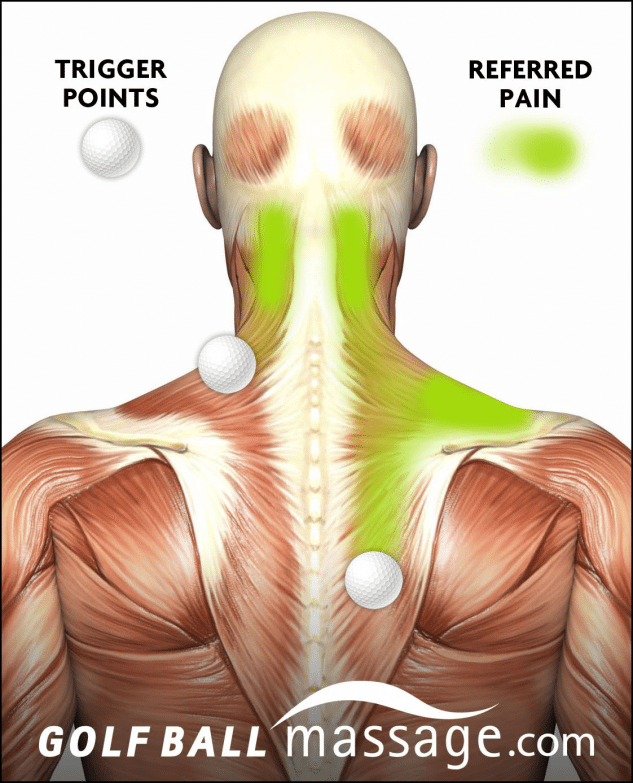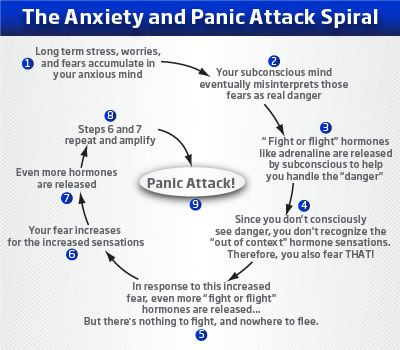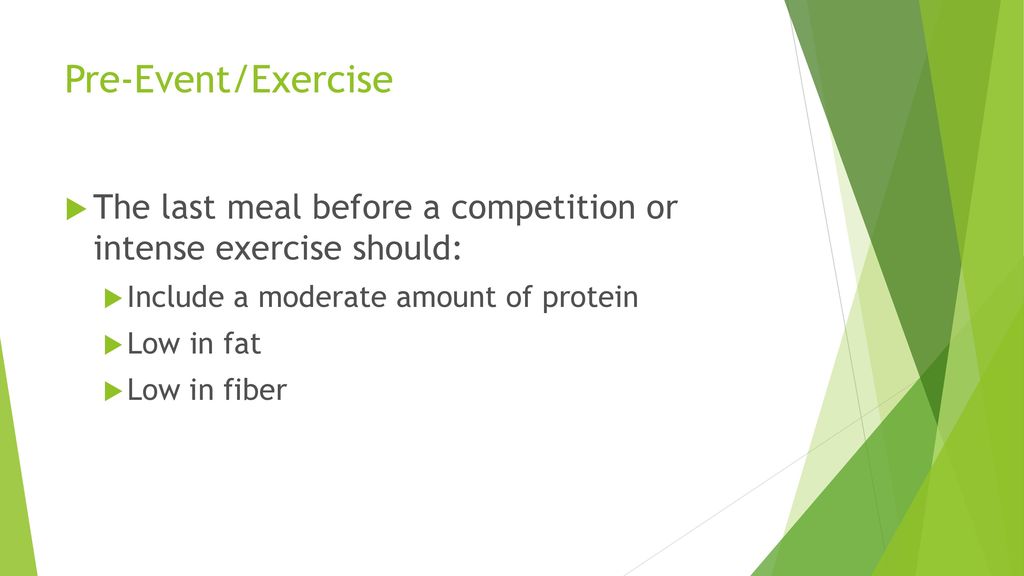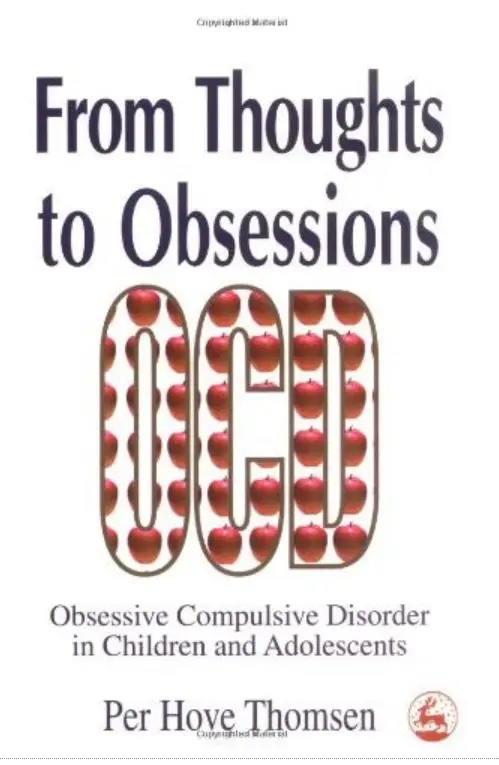Pregnancy and bipolar
Bipolar Disorder in Pregnancy
Written by Annie Stuart
In this Article
- Complications of Bipolar Disorder in Pregnancy
- Bipolar Medications During Pregnancy
- Electroconvulsive Therapy (ECT) During Pregnancy
- Other Steps You Can Take
Do you have bipolar disorder and want to become pregnant or are pregnant already? Perhaps you have bipolar disorder and do not want a pregnancy. Be sure to talk with both your obstetrician and psychiatrist about the risks and benefits of bipolar medications and forms of birth control. For some women, a contraceptive injection that is only needed every few months is best.
If you have bipolar disorder and become pregnant unexpectedly, take note: Stopping your medications suddenly may cause harm to you and your unborn child.
Complications of Bipolar Disorder in Pregnancy
Few studies have been done on bipolar disorder and pregnancy, so not enough is known about the risks of untreated bipolar disorder or the risks and benefits of medications during pregnancy. And the factors that lead to relapse during pregnancy are not clear.
Bipolar disorder, however, can worsen during pregnancy. Pregnant women or new mothers with bipolar disorder have seven times the risk of hospital admissions compared to pregnant women who do not have bipolar disorder.
At least one study has called into question the common belief that pregnancy may have a protective effect for women with bipolar disorder. The study followed 89 women through pregnancy and the year after delivery. When stopping bipolar medications for the period from six months before conception to12 weeks after, the women had:
- Twice the risk of relapse
- A 50% risk of recurrence within just two weeks, if they stopped suddenly
- Bipolar symptoms throughout 40% of the pregnancy -- or more than four times that of women who continued their bipolar medications
Bipolar Medications During Pregnancy
Some women continue taking bipolar medications and have healthy babies. But a few bipolar medications have an increased risk of birth defects in the first trimester. That includes defects such as:
But a few bipolar medications have an increased risk of birth defects in the first trimester. That includes defects such as:
- Neural tube defects
- Heart defects
- Developmental delay or neurobehavioral problems
However, you must weigh these risks against the risks of untreated bipolar disorder.
Untreated depression, for example, has been linked in some studies with low birth weight, or possible negative effects on developing brain structures in the baby. Mood symptoms can also lead to behaviors like these, which can harm a baby:
- Poor prenatal care
- Poor nutrition
- A rise in alcohol or tobacco use
- Stress and trouble with attachment
Your doctor may suggest stopping some medicines but continuing others, because, for some women, the mental health risks of stopping a medication are greater than the possible (or unknown) risks -- if any -- of continuing it. Psychiatrists with expertise in women's health often advise continuing certain psychiatric medicines during pregnancy along with regular tests to check on the health of your baby. But whatever you do, don't stop taking medications without first talking with your doctor.
But whatever you do, don't stop taking medications without first talking with your doctor.
Was your pregnancy unplanned? If so, know that stopping medications suddenly may do more harm than good.
Mood stabilizers. Taking multiple mood-stabilizing drugs can carry more risks than taking just one. Because of the rare risk for a particular kind of heart defect, lithium is sometimes not recommended during the first three months of pregnancy unless its benefits clearly outweigh the risks. Lithium may, though, be a safer choice than some anticonvulsants. And when lithium is continued after childbirth, it can reduce the rate of relapse from 50% to 10%.
To reduce its risks to you and your child:
- Drink plenty of water and maintain normal salt intake to prevent lithium toxicity.
- Have your lithium levels checked regularly.
- If you choose to breastfeed while taking lithium, make sure your pediatrician is checking your baby's levels of lithium, thyroid hormone, and kidney function after delivery, at 4-6 weeks of age, and then every 8-12 weeks.
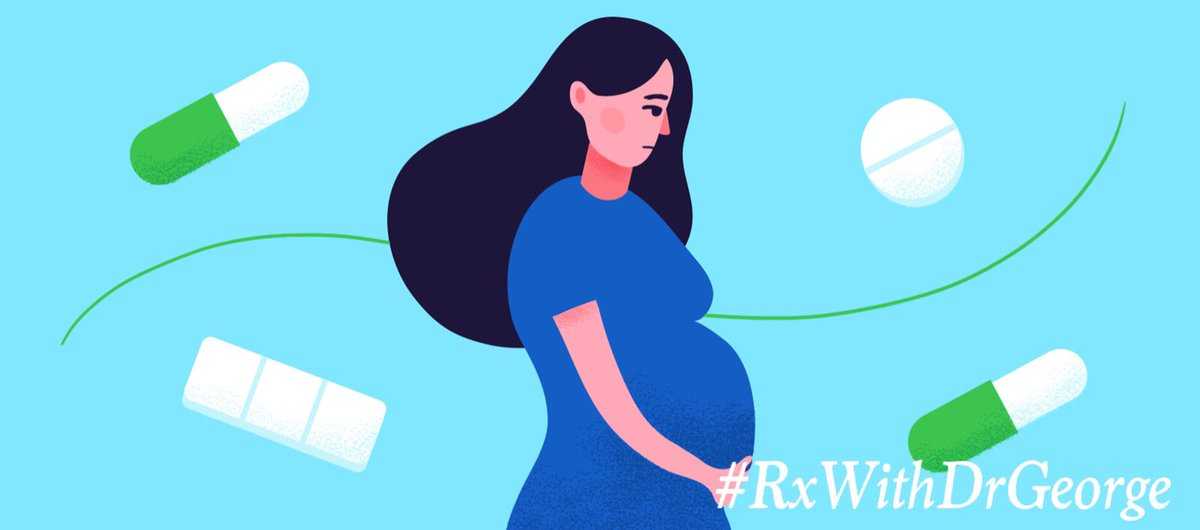
Both valproate (Depakote) and carbamazepine (Tegretol) during the first trimester may lead to birth defects such as neural tube defects, affecting the formation of the brain and spinal cord (for this reason, it is crucial to take the proper prenatal vitamins, including folic acid).And most experts say it is a good idea to stop them at least during the first trimester of pregnancy. You may need to switch to another drug.
There is less information on the safety of newer anticonvulsants. However, lamotrigine (Lamictal) may be a useful alternative for some women.
Antipsychotic medications. Antipsychotic medications can be used during acute treatment of mania, especially to manage delusions or hallucinations. Some medicines in this family also have become standard first-line treatments for acute bipolar depression. Examples of newer antipsychotics include:
- Aripiprazole (Abilify)
- Cariprazine (Vraylar)
- Lurasidone (Latuda)
- Olanzapine (Zyprexa)
- Olanzapine/samidorphan (Lybalvi)
- Quetiapine (Seroquel)
- Risperidone (Risperdal)
- Ziprasidone (Geodon)
Your doctor may suggest that you switch during pregnancy to an older-generation antipsychotic such as haloperidol (Haldol). This may also be a good idea if you've stopped taking a mood stabilizer but symptoms came back.
This may also be a good idea if you've stopped taking a mood stabilizer but symptoms came back.
Antidepressants. There is less information about the effects of antidepressants on bipolar disorder and pregnancy. If you are on antidepressants, your doctors will watch you closely for mood switches or multiple episodes over time. Also, know that these drugs may increase the risk of mania. This is thought to be especially true if mood stabilizers have been stopped.
Electroconvulsive Therapy (ECT) During Pregnancy
Also known as electroshock, this therapy is among the safest treatment options during pregnancy and can have a therapeutic effect for mood disorders. During pregnancy, this type of therapy causes few complications. But to reduce the risks, your doctor may:
- Have the baby's heart rate and oxygen levels monitored during ECT.
- Suggest antacids or placement of an airway tube (intubation) to reduce the risk of gastric regurgitation or lung inflammation during ECT.
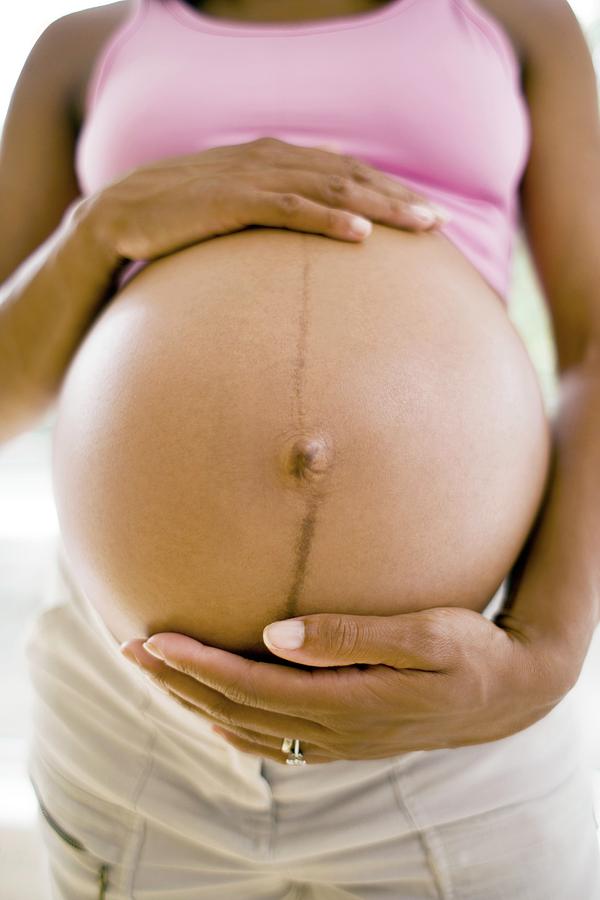
- Encourage you to eat well and drink plenty of water to help prevent premature contractions.
Other Steps You Can Take
Do what you can to exercise and manage stress. And maintain structure in your day. These steps can help you get good sleep and reduce rapid shifts in moods. As always, psychotherapy can also be a big help.
Next Article
Therapy for Bipolar DisorderBipolar Disorder Guide
- Overview
- Symptoms & Types
- Treatment & Prevention
- Living & Support
Treatment of bipolar disorders during pregnancy: maternal and fetal safety and challenges
1. Belmaker RH. Bipolar disorder. N Engl J Med. 2004;351:476–486. [PubMed] [Google Scholar]
2. Judd LL, Akiskal HS, Schettler PJ, et al. The long-term natural history of the weekly symptomatic status of bipolar I disorder. Arch Gen Psychiatry. 2002;59:530–537.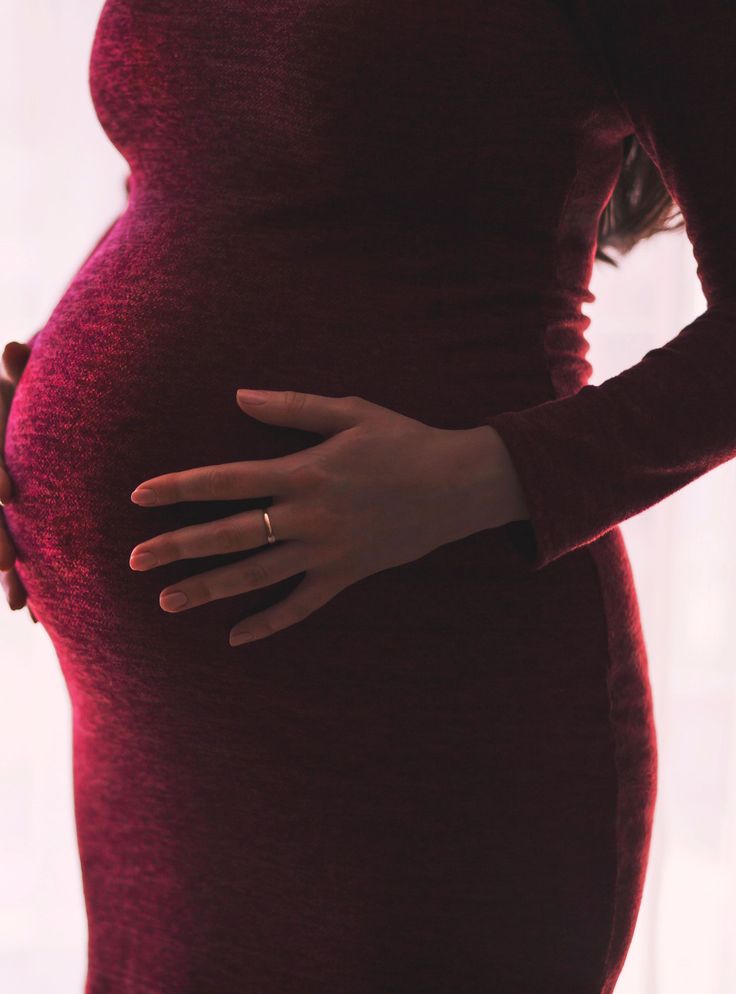 [PubMed] [Google Scholar]
[PubMed] [Google Scholar]
3. Kleinman L, Lowin A, Flood E, Gandhi G, Edgell E, Revicki D. Costs of bipolar disorder. Pharmacoeconomics. 2003;21:601–622. [PubMed] [Google Scholar]
4. Dean BB, Gerner D, Gerner RH. A systematic review evaluating health-related quality of life, work impairment, and healthcare costs and utilization in bipolar disorder. Curr Med Res Opin. 2004;20:139–154. [PubMed] [Google Scholar]
5. Stensland MD, Jacobson JG, Nyhuis A. Service utilization and associated direct costs for bipolar disorder in 2004: an analysis in managed care. J Affect Disord. 2007;101:187–193. [PubMed] [Google Scholar]
6. Tohen M, Zarate CA, Jr, Hennen J, et al. The McLean-Harvard First-Episode Mania Study: prediction of recovery and first recurrence. Am J Psychiatry. 2003;160:2099–2107. [PubMed] [Google Scholar]
7. Goldberg JF, Harrow M. Consistency of remission and outcome in bipolar and unipolar mood disorders: a 10-year prospective follow-up. J Affect Disord.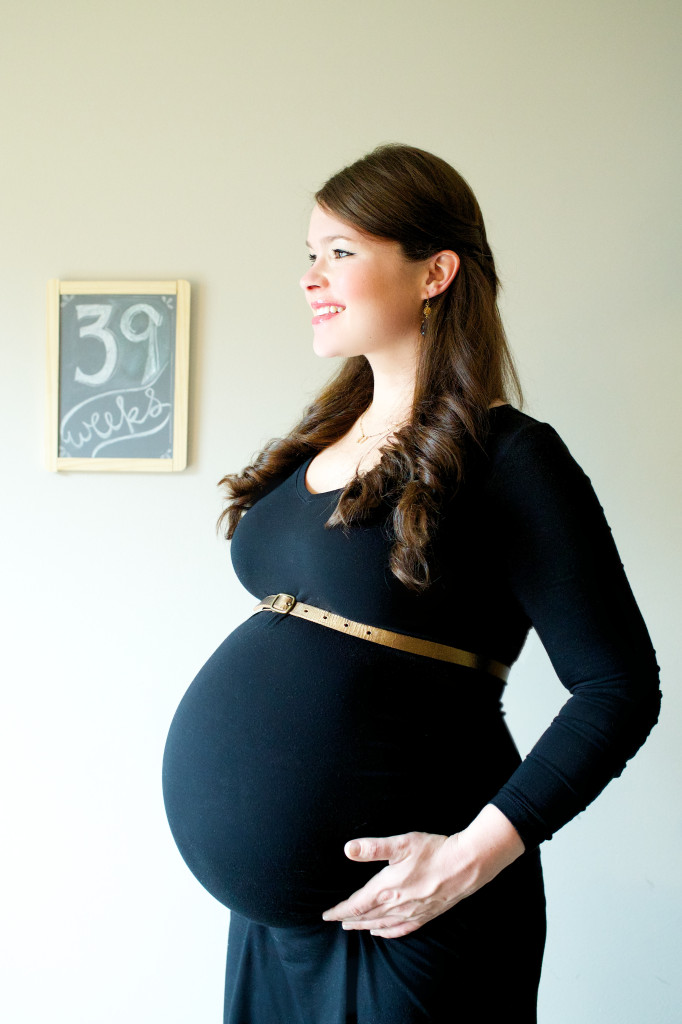 2004;81:123–131. [PubMed] [Google Scholar]
2004;81:123–131. [PubMed] [Google Scholar]
8. Rihmer Z, Angst J. Mood disorders: epidemiology. In: Sadock BJ, Sadock VA, Ruiz P, editors. Kaplan and Sadock’s Comprehensive Textbook of Psychiatry. 9th ed. Philadelphia: Lippincott Williams & Wilkins; 2009. pp. 1645–1652. [Google Scholar]
9. Bauer M, Pfennig A. Epidemiology of bipolar disorders. Epilepsia. 2005;46(Suppl 4):8–13. [PubMed] [Google Scholar]
10. Angst J, Gamma A, Lewinsohn P. The evolving epidemiology of bipolar disorder. World Psychiatry. 2002;1:146–148. [PMC free article] [PubMed] [Google Scholar]
11. Kessler RC, Chiu WT, Demler O, Merikangas KR, Walters EE. Prevalence, severity, and comorbidity of 12-month DSM-IV disorders in the National Comorbidity Survey Replication. Arch Gen Psychiatry. 2005;62:617–627. [PMC free article] [PubMed] [Google Scholar]
12. Fountoulakis KN, Vieta E. Treatment of bipolar disorder: a systematic review of available data and clinical perspectives. Int J Neuropsychopharmacol. 2008;11:999–1029. [PubMed] [Google Scholar]
2008;11:999–1029. [PubMed] [Google Scholar]
13. American Psychiatric Association Practice guideline for the treatment of patients with bipolar disorder (revision) Am J Psychiatry. 2002;159:1–50. [PubMed] [Google Scholar]
14. Judd LL, Akiskal HS, Schettler PJ, et al. The comparative clinical phenotype and long term longitudinal episode course of bipolar I and II: a clinical spectrum or distinct disorders? J Affect Disord. 2003;73:19–32. [PubMed] [Google Scholar]
15. Gitlin MJ, Swendsen J, Heller TL, Hammen C. Relapse and impairment in bipolar disorder. Am J Psychiatry. 1995;152:1635–1640. [PubMed] [Google Scholar]
16. Scott J, Pope M. Self-reported adherence to treatment with mood stabilizers, plasma levels, and psychiatric hospitalization. Am J Psychiatry. 2002;159:1927–1929. [PubMed] [Google Scholar]
17. Gitlin M, Frye MA. Maintenance therapies in bipolar disorders. Bipolar Disord. 2012;14(Suppl 2):51–65. [PubMed] [Google Scholar]
18. Suppes T, Leverich GS, Keck PE, et al. The Stanley Foundation Bipolar Treatment Outcome Network. II. Demographics and illness characteristics of the first 261 patients. J Affect Disord. 2001;67:45–59. [PubMed] [Google Scholar]
The Stanley Foundation Bipolar Treatment Outcome Network. II. Demographics and illness characteristics of the first 261 patients. J Affect Disord. 2001;67:45–59. [PubMed] [Google Scholar]
19. Kennedy N, Boydell J, Kalidindi S, et al. Gender differences in incidence and age at onset of mania and bipolar disorder over a 35-year period in Camberwell, England. Am J Psychiatry. 2005;162:257–262. [PubMed] [Google Scholar]
20. Vesga-López O, Blanco C, Keyes K, Olfson M, Grant BF, Hasin DS. Psychiatric disorders in pregnant and postpartum women in the United States. Arch Gen Psychiatry. 2008;65:805–815. [PMC free article] [PubMed] [Google Scholar]
21. Blehar MC, DePaulo JR, Jr, Gershon ES, Reich T, Simpson SG, Nurnberger JI., Jr Women with bipolar disorder: findings from the NIMH Genetics Initiative sample. Psychopharmacol Bull. 1998;34:239–243. [PubMed] [Google Scholar]
22. Yonkers KA, Vigod S, Ross LE. Diagnosis, pathophysiology, and management of mood disorders in pregnant and postpartum women. Obstet Gynecol. 2011;117:961–977. [PubMed] [Google Scholar]
Obstet Gynecol. 2011;117:961–977. [PubMed] [Google Scholar]
23. Viguera AC, Tondo L, Koukopoulos AE, Reginaldi D, Lepri B, Baldessarini RJ. Episodes of mood disorders in 2,252 pregnancies and postpartum periods. Am J Psychiatry. 2011;168:1179–1185. [PubMed] [Google Scholar]
24. Toh S, Li Q, Cheetham TC, et al. Prevalence and trends in the use of antipsychotic medications during pregnancy in the US, 2001–2007: a population-based study of 585,615 deliveries. Arch Womens Ment Health. 2013;16:149–157. [PMC free article] [PubMed] [Google Scholar]
25. Epstein RA, Bobo WV, Shelton RC, et al. Increasing use of atypical antipsychotics and anticonvulsants during pregnancy. Pharmacoepidemiol Drug Saf. 2013;22:794–801. [PMC free article] [PubMed] [Google Scholar]
26. Baldessarini RJ, Leahy L, Arcona S, Gause D, Zhang W, Hennen J. Patterns of psychotropic drug prescription for US patients with diagnoses of bipolar disorders. Psychiatr Serv. 2007;58:85–91. [PubMed] [Google Scholar]
27. Pacchiarotti I, Bond DJ, Baldessarini RJ, et al. The International Society for Bipolar Disorders (ISBD) task force report on antidepressant use in bipolar disorders. Am J Psychiatry. 2013;170:1249–1262. [PMC free article] [PubMed] [Google Scholar]
Pacchiarotti I, Bond DJ, Baldessarini RJ, et al. The International Society for Bipolar Disorders (ISBD) task force report on antidepressant use in bipolar disorders. Am J Psychiatry. 2013;170:1249–1262. [PMC free article] [PubMed] [Google Scholar]
28. Brunette MF, Noordsy DL, Xie H, Drake RE. Benzodiazepine use and abuse among patients with severe mental illness and co-occurring substance use disorders. Psychiatr Serv. 2003;54:1395–1401. [PubMed] [Google Scholar]
29. Rosa AR, Fountoulakis K, Siamouli M, Gonda X, Vieta E. Is anticonvulsant treatment of mania a class effect? Data from randomized clinical trials. CNS Neurosci Ther. 2011;17:167–177. [PMC free article] [PubMed] [Google Scholar]
30. Jablensky AV, Morgan V, Zubrick SR, Bower C, Yellachich LA. Pregnancy, delivery, and neonatal complications in a population cohort of women with schizophrenia and major affective disorders. Am J Psychiatry. 2005;162:79–91. [PubMed] [Google Scholar]
31. Lee HC, Lin HC. Maternal bipolar disorder increased low birthweight and preterm births: a nationwide population-based study. J Affect Disord. 2010;121:100–105. [PubMed] [Google Scholar]
J Affect Disord. 2010;121:100–105. [PubMed] [Google Scholar]
32. Bodén R, Lundgren M, Brandt L, Reutfors J, Andersen M, Kieler H. Risks of adverse pregnancy and birth outcomes in women treated or not treated with mood stabilisers for bipolar disorder: population based cohort study. BMJ. 2012;345:e7085. [PMC free article] [PubMed] [Google Scholar]
33. Henin A, Biederman J, Mick E, et al. Psychopathology in the offspring of parents with bipolar disorder: a controlled study. Biol Psychiatry. 2005;58:554–561. [PubMed] [Google Scholar]
34. Hirshfeld-Becker DR, Biederman J, Henin A, et al. Psychopathology in the young offspring of parents with bipolar disorder: a controlled pilot study. Psychiatry Res. 2006;145:155–167. [PubMed] [Google Scholar]
35. Duffy A, Alda M, Crawford L, Milin R, Grof P. The early manifestations of bipolar disorder: a longitudinal prospective study of the offspring of bipolar parents. Bipolar Disord. 2007;9:828–838. [PubMed] [Google Scholar]
36. Munk-Olsen T, Laursen TM, Mendelson T, Pedersen CB, Mors O, Mortensen PB. Risks and predictors of readmission for a mental disorder during the postpartum period. Arch Gen Psychiatry. 2009;66:189–195. [PubMed] [Google Scholar]
Munk-Olsen T, Laursen TM, Mendelson T, Pedersen CB, Mors O, Mortensen PB. Risks and predictors of readmission for a mental disorder during the postpartum period. Arch Gen Psychiatry. 2009;66:189–195. [PubMed] [Google Scholar]
37. Kendell RE, Chalmers JC, Platz C. Epidemiology of puerperal psychoses. Br J Psychiatry. 1987;150:662–673. [PubMed] [Google Scholar]
38. Heron J, Haque S, Oyebode F, Craddock N, Jones I. A longitudinal study of hypomania and depression symptoms in pregnancy and the postpartum period. Bipolar Disord. 2009;11:410–417. [PubMed] [Google Scholar]
39. Jones I, Craddock N. Bipolar disorder and childbirth: the importance of recognising risk. Br J Psychiatry. 2005;186:453–454. [PubMed] [Google Scholar]
40. Akdeniz F, Vahip S, Pirildar S, Vahip I, Doganer I, Bulut I. Risk factors associated with childbearing-related episodes in women with bipolar disorder. Psychopathology. 2003;36:234–238. [PubMed] [Google Scholar]
41. Harlow BL, Vitonis AF, Sparen P, Cnattingius S, Joffe H, Hultman CM. Incidence of hospitalization for postpartum psychotic and bipolar episodes in women with and without prior prepregnancy or prenatal psychiatric hospitalizations. Arch Gen Psychiatry. 2007;64:42–48. [PubMed] [Google Scholar]
Incidence of hospitalization for postpartum psychotic and bipolar episodes in women with and without prior prepregnancy or prenatal psychiatric hospitalizations. Arch Gen Psychiatry. 2007;64:42–48. [PubMed] [Google Scholar]
42. Valdimarsdóttir U, Hultman CM, Harlow B, Cnattingius S, Sparén P. Psychotic illness in first-time mothers with no previous psychiatric hospitalizations: a population-based study. PLoS Med. 2009;6:e13. [PMC free article] [PubMed] [Google Scholar]
43. Jones I, Craddock N. Familiality of the puerperal trigger in bipolar disorder: results of a family study. Am J Psychiatry. 2001;158:913–917. [PubMed] [Google Scholar]
44. Curtis V. Women are not the same as men: specific clinical issues for female patients with bipolar disorder. Bipolar Disord. 2005;7(Suppl 1):16–24. [PubMed] [Google Scholar]
45. Regier DA, Farmer ME, Rae DS, et al. Comorbidity of mental disorders with alcohol and other drug abuse. Results from the Epidemiologic Catchment Area (ECA) study.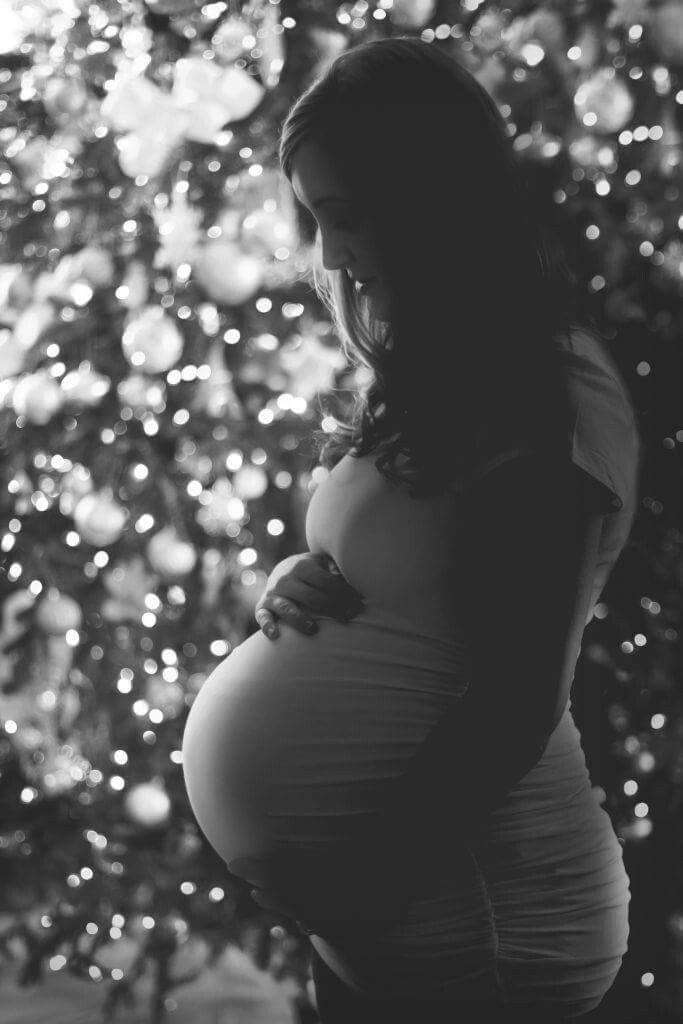 JAMA. 1990;264:2511–2518. [PubMed] [Google Scholar]
JAMA. 1990;264:2511–2518. [PubMed] [Google Scholar]
46. Goldstein BI, Strober MA, Birmaher B, et al. Substance use disorders among adolescents with bipolar spectrum disorders. Bipolar Disord. 2008;10:469–478. [PMC free article] [PubMed] [Google Scholar]
47. LIndahl V, Pearson JL, Colpe L. Prevalence of suicidality during pregnancy and the postpartum. Arch Womens Ment Health. 2005;8:77–87. [PubMed] [Google Scholar]
48. Muralidharan K, Ali M, Silveira LE, et al. Efficacy of second generation antipsychotics in treating acute mixed episodes in bipolar disorder: a meta-analysis of placebo-controlled trials. J Affect Disord. 2013;150:408–414. [PubMed] [Google Scholar]
49. Yildiz A, Vieta E, Leucht S, Baldessarini RJ. Efficacy of antimanic treatments: meta-analysis of randomized, controlled trials. Neuropsychopharmacology. 2011;36:375–389. [PMC free article] [PubMed] [Google Scholar]
50. Correll CU, Sheridan EM, DelBello MP. Antipsychotic and mood stabilizer efficacy and tolerability in pediatric and adult patients with bipolar I mania: a comparative analysis of acute, randomized, placebo-controlled trials.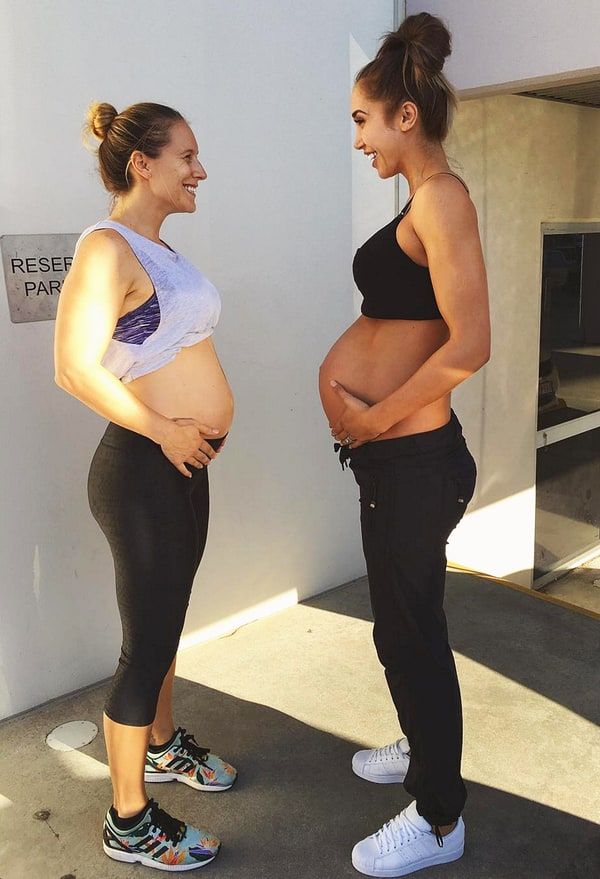 Bipolar Disord. 2010;12:116–141. [PubMed] [Google Scholar]
Bipolar Disord. 2010;12:116–141. [PubMed] [Google Scholar]
51. Tamayo JM, Zarate CA, Vieta E, Vázquez G, Tohen M. Level of response and safety of pharmacological monotherapy in the treatment of acute bipolar I disorder phases: a systematic review and meta-analysis. Int J Neuropsychopharmacol. 2010;13:813–832. [PMC free article] [PubMed] [Google Scholar]
52. Smith LA, Cornelius V, Warnock A, Tacchi MJ, Taylor D. Pharmacological interventions for acute bipolar mania: a systematic review of randomized placebo-controlled trials. Bipolar Disord. 2007;9:551–560. [PubMed] [Google Scholar]
53. Scherk H, Pajonk FG, Leucht S. Second-generation antipsychotic agents in the treatment of acute mania: a systematic review and meta-analysis of randomized controlled trials. Arch Gen Psychiatry. 2007;64:442–455. [PubMed] [Google Scholar]
54. Smith LA, Cornelius V, Warnock A, Tacchi MJ, Taylor D. Acute bipolar mania: a systematic review and meta-analysis of co-therapy vs monotherapy.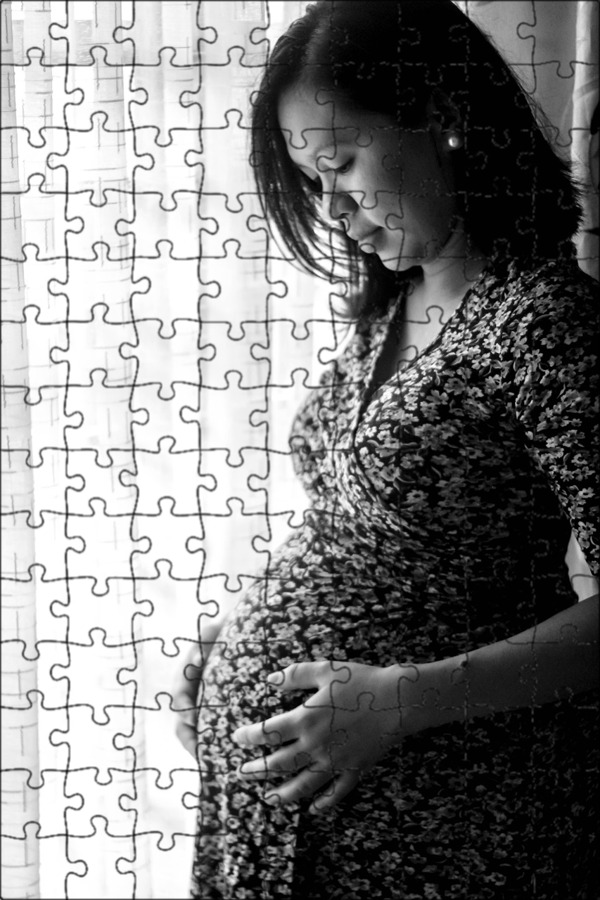 Acta Psychiatr Scand. 2007;115:12–20. [PubMed] [Google Scholar]
Acta Psychiatr Scand. 2007;115:12–20. [PubMed] [Google Scholar]
55. Perlis RH, Welge JA, Vornik LA, Hirschfeld RM, Keck PE., Jr Atypical antipsychotics in the treatment of mania: a meta-analysis of randomized, placebo-controlled trials. J Clin Psychiatry. 2006;67:509–516. [PubMed] [Google Scholar]
56. Viguera AC, Tondo L, Baldessarini RJ. Sex differences in response to lithium treatment. Am J Psychiatry. 2000;157:1509–1511. [PubMed] [Google Scholar]
57. Tondo L, Baldessarini RJ, Floris G, Rudas N. Effectiveness of restarting lithium treatment after its discontinuation in bipolar I and bipolar II disorders. Am J Psychiatry. 1997;154:548–550. [PubMed] [Google Scholar]
58. Baldessarini RJ, Hennen J, Wilson M, et al. Olanzapine versus placebo in acute mania: treatment responses in subgroups. J Clin Psychopharmacol. 2003;23:370–376. [PubMed] [Google Scholar]
59. Cipriani A, Barbui C, Salanti G, et al. Comparative efficacy and acceptability of antimanic drugs in acute mania: a multiple-treatments meta-analysis. Lancet. 2011;378:1306–1315. [PubMed] [Google Scholar]
Lancet. 2011;378:1306–1315. [PubMed] [Google Scholar]
60. Vieta E, Locklear J, Günther O, et al. Treatment options for bipolar depression: a systematic review of randomized, controlled trials. J Clin Psychopharmacol. 2010;30:579–590. [PubMed] [Google Scholar]
61. De FJ, Deschepper E, Audenaert K, et al. Second generation antipsychotics in the treatment of bipolar depression: a systematic review and meta-analysis. J Psychopharmacol. 2012;26:603–617. [PubMed] [Google Scholar]
62. Silva MT, Zimmermann IR, Galvao TF, Pereira MG. Olanzapine plus fluoxetine for bipolar disorder: a systematic review and meta-analysis. J Affect Disord. 2013;146:310–318. [PubMed] [Google Scholar]
63. Geddes JR, Calabrese JR, Goodwin GM. Lamotrigine for treatment of bipolar depression: independent meta-analysis and meta-regression of individual patient data from five randomised trials. Br J Psychiatry. 2009;194:4–9. [PubMed] [Google Scholar]
64. Selle V, Schalkwijk S, Vázquez GH, Baldessarini RJ.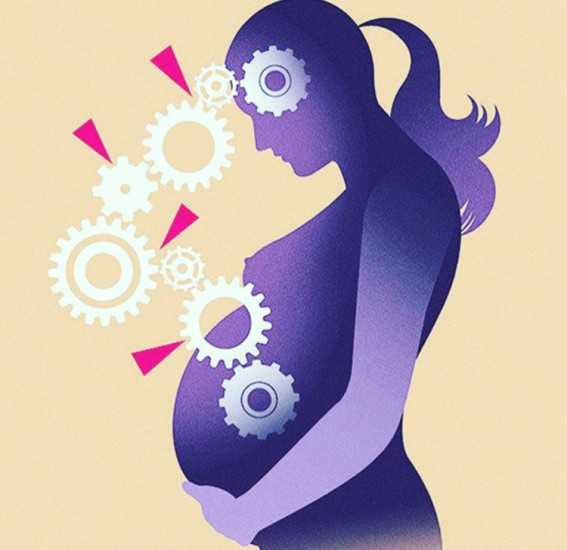 Treatments for acute bipolar depression: meta-analyses of placebo-controlled, monotherapy trials of anticonvulsants, lithium and antipsychotics. Pharmacopsychiatry. 2014;47:43–52. [PubMed] [Google Scholar]
Treatments for acute bipolar depression: meta-analyses of placebo-controlled, monotherapy trials of anticonvulsants, lithium and antipsychotics. Pharmacopsychiatry. 2014;47:43–52. [PubMed] [Google Scholar]
65. Loebel A, Cucchiaro J, Silva R, et al. Lurasidone as adjunctive therapy with lithium or valproate for the treatment of bipolar I depression: a randomized, double-blind, placebo-controlled study. Am J Psychiatry. 2014;171:169–177. [PubMed] [Google Scholar]
66. Loebel A, Cucchiaro J, Silva R, et al. Lurasidone monotherapy in the treatment of bipolar I depression: a randomized, double-blind, placebo-controlled study. Am J Psychiatry. 2014;171:160–168. [PubMed] [Google Scholar]
67. van der Loos ML, Mulder PG, Hartong EG, et al. Efficacy and safety of lamotrigine as add-on treatment to lithium in bipolar depression: a multicenter, double-blind, placebo-controlled trial. J Clin Psychiatry. 2009;70:223–231. [PubMed] [Google Scholar]
68. Young AH, McElroy SL, Bauer M, et al. A double-blind, placebo-controlled study of quetiapine and lithium monotherapy in adults in the acute phase of bipolar depression (EMBOLDEN I) J Clin Psychiatry. 2010;71:150–162. [PubMed] [Google Scholar]
A double-blind, placebo-controlled study of quetiapine and lithium monotherapy in adults in the acute phase of bipolar depression (EMBOLDEN I) J Clin Psychiatry. 2010;71:150–162. [PubMed] [Google Scholar]
69. Zornberg GL, Pope HG., Jr Treatment of depression in bipolar disorder: new directions for research. J Clin Psychopharmacol. 1993;13:397–408. [PubMed] [Google Scholar]
70. Bond DJ, Lam RW, Yatham LN. Divalproex sodium versus placebo in the treatment of acute bipolar depression: a systematic review and meta-analysis. J Affect Disord. 2010;124:228–234. [PubMed] [Google Scholar]
71. Viguera AC, Nonacs R, Cohen LS, Tondo L, Murray A, Baldessarini RJ. Risk of recurrence of bipolar disorder in pregnant and nonpregnant women after discontinuing lithium maintenance. Am J Psychiatry. 2000;157:179–184. [PubMed] [Google Scholar]
72. Viguera AC, Whitfield T, Baldessarini RJ, et al. Risk of recurrence in women with bipolar disorder during pregnancy: prospective study of mood stabilizer discontinuation.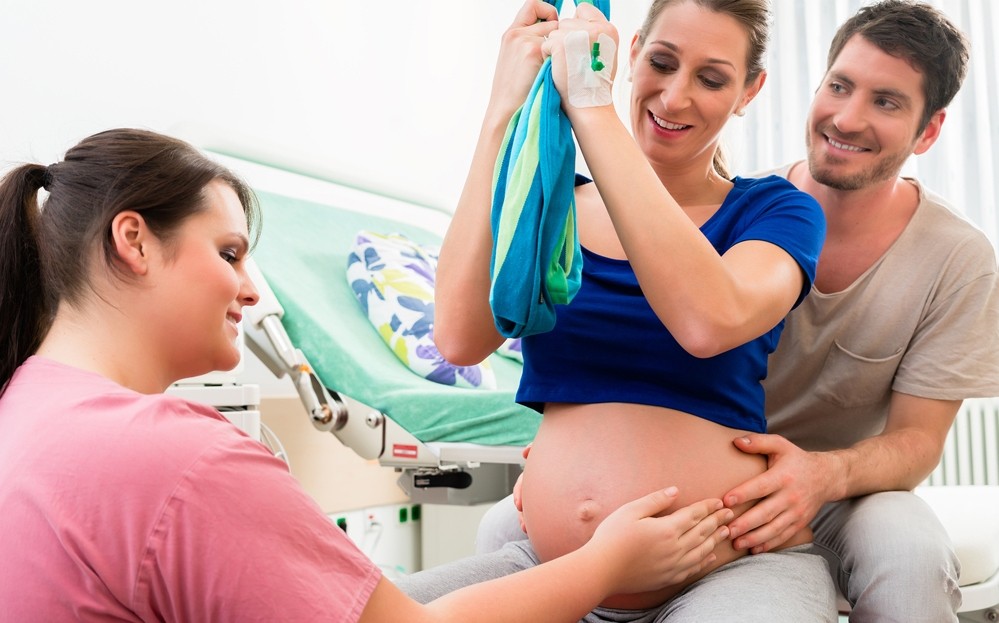 Am J Psychiatry. 2007;164:1817–1824. [PubMed] [Google Scholar]
Am J Psychiatry. 2007;164:1817–1824. [PubMed] [Google Scholar]
73. Newport DJ, Stowe ZN, Viguera AC, et al. Lamotrigine in bipolar disorder: efficacy during pregnancy. Bipolar Disord. 2008;10:432–436. [PubMed] [Google Scholar]
74. Bergink V, Bouvy PF, Vervoort JS, Koorengevel KM, Steegers EA, Kushner SA. Prevention of postpartum psychosis and mania in women at high risk. Am J Psychiatry. 2012;169:609–615. [PubMed] [Google Scholar]
75. Cohen LS, Sichel DA, Robertson LM, Heckscher E, Rosenbaum JF. Postpartum prophylaxis for women with bipolar disorder. Am J Psychiatry. 1995;152:1641–1645. [PubMed] [Google Scholar]
76. Wisner KL, Hanusa BH, Peindl KS, Perel JM. Prevention of postpartum episodes in women with bipolar disorder. Biol Psychiatry. 2004;56:592–596. [PubMed] [Google Scholar]
77. Yatham LN, Kennedy SH, Parikh SV, et al. Canadian Network for Mood and Anxiety Treatments (CANMAT) and International Society for Bipolar Disorders (ISBD) collaborative update of CANMAT guidelines for the management of patients with bipolar disorder: update 2013. Bipolar Disord. 2013;15:1–44. [PubMed] [Google Scholar]
Bipolar Disord. 2013;15:1–44. [PubMed] [Google Scholar]
78. Sachs GS. Psychosocial interventions as adjunctive therapy for bipolar disorder. J Psychiatr Pract. 2008;14(Suppl 2):39–44. [PubMed] [Google Scholar]
79. Szentagotai A, David D. The efficacy of cognitive-behavioral therapy in bipolar disorder: a quantitative meta-analysis. J Clin Psychiatry. 2010;71:66–72. [PubMed] [Google Scholar]
80. Hollon SD, Ponniah K. A review of empirically supported psychological therapies for mood disorders in adults. Depress Anxiety. 2010;27:891–932. [PMC free article] [PubMed] [Google Scholar]
81. Beynon S, Soares-Weiser K, Woolacott N, Duffy S, Geddes JR. Psychosocial interventions for the prevention of relapse in bipolar disorder: systematic review of controlled trials. Br J Psychiatry. 2008;192:5–11. [PubMed] [Google Scholar]
82. Miklowitz DJ. Adjunctive psychotherapy for bipolar disorder: state of the evidence. Am J Psychiatry. 2008;165:1408–1419. [PMC free article] [PubMed] [Google Scholar]
83. Miklowitz DJ, Johnson SL. Social and familial factors in bipolar disorder: basic processes and relevant interventions. Clin Psychol (New York) 2009;16:281–296. [PMC free article] [PubMed] [Google Scholar]
Miklowitz DJ, Johnson SL. Social and familial factors in bipolar disorder: basic processes and relevant interventions. Clin Psychol (New York) 2009;16:281–296. [PMC free article] [PubMed] [Google Scholar]
84. Harvey AG. Sleep and circadian rhythms in bipolar disorder: seeking synchrony, harmony, and regulation. Am J Psychiatry. 2008;165:820–829. [PubMed] [Google Scholar]
85. Sienaert P, Lambrichts L, Dols A, De FJ. Evidence-based treatment strategies for treatment-resistant bipolar depression: a systematic review. Bipolar Disord. 2013;15:61–69. [PubMed] [Google Scholar]
86. UK ECT Review Group Efficacy and safety of electroconvulsive therapy in depressive disorders: a systematic review and meta-analysis. Lancet. 2003;361:799–808. [PubMed] [Google Scholar]
87. Loo C, Katalinic N, Mitchell PB, Greenberg B. Physical treatments for bipolar disorder: a review of electroconvulsive therapy, stereotactic surgery and other brain stimulation techniques. J Affect Disord. 2011;132:1–13.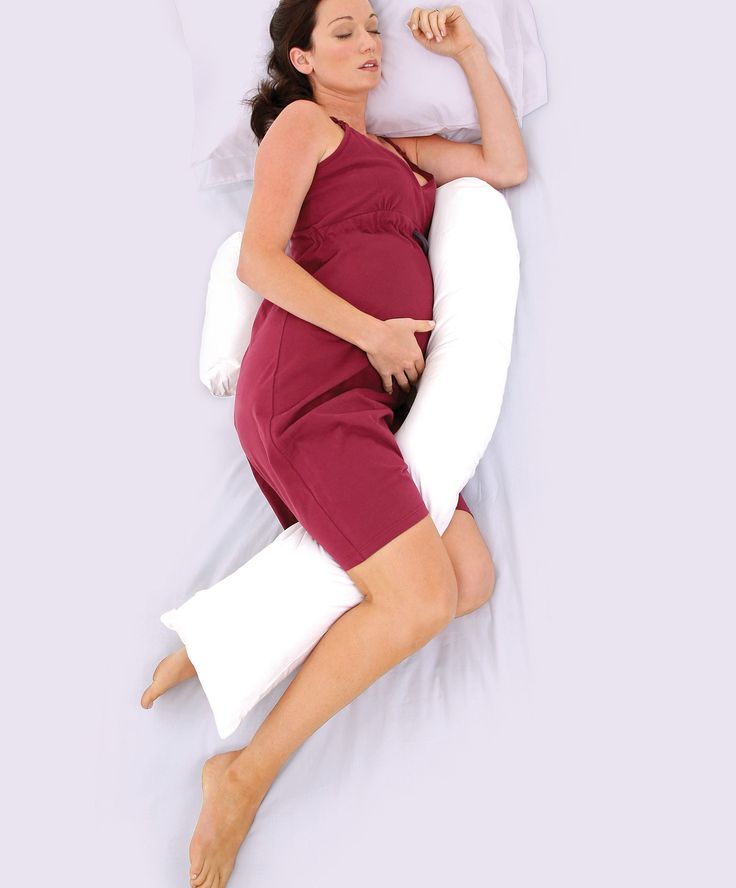 [PubMed] [Google Scholar]
[PubMed] [Google Scholar]
88. Dierckx B, Heijnen WT, van den Broek WW, Birkenhager TK. Efficacy of electroconvulsive therapy in bipolar versus unipolar major depression: a meta-analysis. Bipolar Disord. 2012;14:146–150. [PubMed] [Google Scholar]
89. Leiknes KA, Cooke MJ, Jarosch-von SL, Harboe I, Høie B. Electroconvulsive therapy during pregnancy: a systematic review of case studies. Arch Womens Ment Health. 2013 Nov 24; Epub. [PMC free article] [PubMed] [Google Scholar]
90. Goodwin GM. Evidence-based guidelines for treating bipolar disorder: revised second edition – recommendations from the British Association for Psychopharmacology. J Psychopharmacol. 2009;23:346–388. [PubMed] [Google Scholar]
91. Schou M. Lithium treatment during pregnancy, delivery, and lactation: an update. J Clin Psychiatry. 1990;51:410–413. [PubMed] [Google Scholar]
92. Nora JJ, Nora AH, Toews WH. Letter: Lithium, Ebstein’s anomaly, and other congenital heart defects. Lancet. 1974;2:594–595. [PubMed] [Google Scholar]
[PubMed] [Google Scholar]
93. Weinstein MR, Goldfield M. Cardiovascular malformations with lithium use during pregnancy. Am J Psychiatry. 1975;132:529–531. [PubMed] [Google Scholar]
94. Attenhofer Jost CH, Connolly HM, Dearani JA, Edwards WD, Danielson GK. Ebstein’s anomaly. Circulation. 2007;115:277–285. [PubMed] [Google Scholar]
95. Jacobson SJ, Jones K, Johnson K, et al. Prospective multicentre study of pregnancy outcome after lithium exposure during first trimester. Lancet. 1992;339:530–533. [PubMed] [Google Scholar]
96. Schou M. Treating recurrent affective disorders during and after pregnancy. What can be taken safely? Drug Saf. 1998;18:143–152. [PubMed] [Google Scholar]
97. Kallen B, Tandberg A. Lithium and pregnancy. A cohort study on manic-depressive women. Acta Psychiatr Scand. 1983;68:134–139. [PubMed] [Google Scholar]
98. Cohen LS, Friedman JM, Jefferson JW, Johnson EM, Weiner ML. A reevaluation of risk of in utero exposure to lithium. JAMA. 1994;271:146–150. [PubMed] [Google Scholar]
1994;271:146–150. [PubMed] [Google Scholar]
99. Lupo PJ, Langlois PH, Mitchell LE. Epidemiology of Ebstein anomaly: prevalence and patterns in Texas, 1999–2005. Am J Med Genet A. 2011;155A:1007–1014. [PubMed] [Google Scholar]
100. Yacobi S, Ornoy A. Is lithium a real teratogen? What can we conclude from the prospective versus retrospective studies? A review. Isr J Psychiatry Relat Sci. 2008;45:95–106. [PubMed] [Google Scholar]
101. Llewellyn A, Stowe ZN, Strader JR., Jr The use of lithium and management of women with bipolar disorder during pregnancy and lactation. J Clin Psychiatry. 1998;59(Suppl 6):57–64. [PubMed] [Google Scholar]
102. Simard M, Gumbiner B, Lee A, Lewis H, Norman D. Lithium carbonate intoxication. A case report and review of the literature. Arch Intern Med. 1989;149:36–46. [PubMed] [Google Scholar]
103. Kozma C. Neonatal toxicity and transient neurodevelopmental deficits following prenatal exposure to lithium: another clinical report and a review of the literature. Am J Med Genet A. 2005;132:441–444. [PubMed] [Google Scholar]
Am J Med Genet A. 2005;132:441–444. [PubMed] [Google Scholar]
104. Newport DJ, Viguera AC, Beach AJ, Ritchie JC, Cohen LS, Stowe ZN. Lithium placental passage and obstetrical outcome: implications for clinical management during late pregnancy. Am J Psychiatry. 2005;162:2162–2170. [PubMed] [Google Scholar]
105. Karlsson K, Lindstedt G, Lundberg PA, Selstam U. Letter: Transplacental lithium poisoning: reversible inhibition of fetal thyroid. Lancet. 1975;1:1295. [PubMed] [Google Scholar]
106. Mizrahi EM, Hobbs JF, Goldsmith DI. Nephrogenic diabetes insipidus in transplacental lithium intoxication. J Pediatr. 1979;94:493–495. [PubMed] [Google Scholar]
107. Schou M. What happened later to the lithium babies? A follow-up study of children born without malformations. Acta Psychiatr Scand. 1976;54:193–197. [PubMed] [Google Scholar]
108. Troyer WA, Pereira GR, Lannon RA, Belik J, Yoder MC. Association of maternal lithium exposure and premature delivery. J Perinatol. 1993;13:123–127. [PubMed] [Google Scholar]
1993;13:123–127. [PubMed] [Google Scholar]
109. Galbally M, Roberts M, Buist A. Mood stabilizers in pregnancy: a systematic review. Aust N Z J Psychiatry. 2010;44:967–977. [PubMed] [Google Scholar]
110. Bjerkedal T, Czeizel A, Goujard J, et al. Valproic acid and spina bifida. Lancet. 1982;2:1096. [PubMed] [Google Scholar]
111. Jäger-Roman E, Deichl A, Jakob S, et al. Fetal growth, major malformations, and minor anomalies in infants born to women receiving valproic acid. J Pediatr. 1986;108:997–1004. [PubMed] [Google Scholar]
112. Lindhout D, Schmidt D. In-utero exposure to valproate and neural tube defects. Lancet. 1986;1:1392–1393. [PubMed] [Google Scholar]
113. Samrén EB, van Duijn CM, Koch S, et al. Maternal use of antiepileptic drugs and the risk of major congenital malformations: a joint European prospective study of human teratogenesis associated with maternal epilepsy. Epilepsia. 1997;38:981–990. [PubMed] [Google Scholar]
114. Mawer G, Briggs M, Baker GA, et al. Pregnancy with epilepsy: obstetric and neonatal outcome of a controlled study. Seizure. 2010;19:112–119. [PMC free article] [PubMed] [Google Scholar]
Pregnancy with epilepsy: obstetric and neonatal outcome of a controlled study. Seizure. 2010;19:112–119. [PMC free article] [PubMed] [Google Scholar]
115. Wyszynski DF, Nambisan M, Surve T, Alsdorf RM, Smith CR, Holmes LB. Increased rate of major malformations in offspring exposed to valproate during pregnancy. Neurology. 2005;64:961–965. [PubMed] [Google Scholar]
116. Artama M, Auvinen A, Raudaskoski T, Isojärvi I, Isojärvi J. Antiepileptic drug use of women with epilepsy and congenital malformations in offspring. Neurology. 2005;64:1874–1878. [PubMed] [Google Scholar]
117. Morrow J, Russell A, Guthrie E, et al. Malformation risks of antiepileptic drugs in pregnancy: a prospective study from the UK Epilepsy and Pregnancy Register. J Neurol Neurosurg Psychiatry. 2006;77:193–198. [PMC free article] [PubMed] [Google Scholar]
118. Hernández-Díaz S, Smith CR, Shen A, et al. Comparative safety of anti-epileptic drugs during pregnancy. Neurology. 2012;78:1692–1699. [PubMed] [Google Scholar]
119.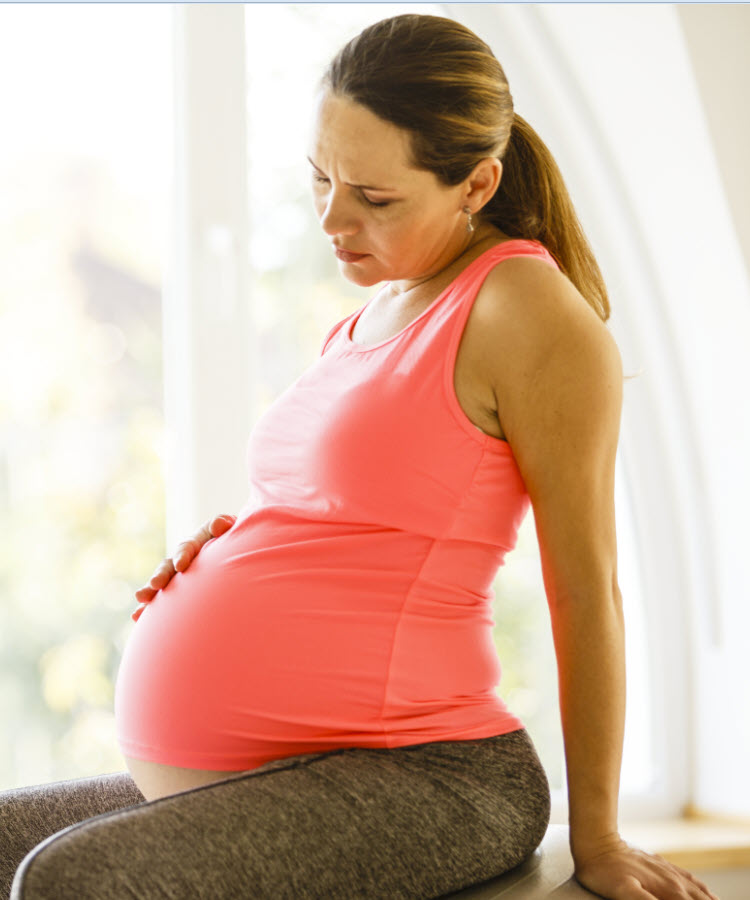 Tomson T, Battino D, Bonizzoni E, et al. Dose-dependent risk of malformations with antiepileptic drugs: an analysis of data from the EURAP epilepsy and pregnancy registry. Lancet Neurol. 2011;10:609–617. [PubMed] [Google Scholar]
Tomson T, Battino D, Bonizzoni E, et al. Dose-dependent risk of malformations with antiepileptic drugs: an analysis of data from the EURAP epilepsy and pregnancy registry. Lancet Neurol. 2011;10:609–617. [PubMed] [Google Scholar]
120. Tomson T, Battino D. Teratogenic effects of antiepileptic drugs. Lancet Neurol. 2012;11:803–813. [PubMed] [Google Scholar]
121. Wide K, Winbladh B, Kallen B. Major malformations in infants exposed to antiepileptic drugs in utero, with emphasis on carbamazepine and valproic acid: a nation-wide, population-based register study. Acta Paediatr. 2004;93:174–176. [PubMed] [Google Scholar]
122. Vajda FJ, O’Brien TJ, Hitchcock A, Graham J, Lander C. The Australian registry of anti-epileptic drugs in pregnancy: experience after 30 months. J Clin Neurosci. 2003;10:543–549. [PubMed] [Google Scholar]
123. Vajda FJ, Graham J, Roten A, Lander CM, O’Brien TJ, Eadie M. Teratogenicity of the newer antiepileptic drugs – the Australian experience. J Clin Neurosci. 2012;19:57–59. [PubMed] [Google Scholar]
2012;19:57–59. [PubMed] [Google Scholar]
124. Kaaja E, Kaaja R, Hiilesmaa V. Major malformations in offspring of women with epilepsy. Neurology. 2003;60:575–579. [PubMed] [Google Scholar]
125. Diav-Citrin O, Shechtman S, Bar-Oz B, Cantrell D, Arnon J, Ornoy A. Pregnancy outcome after in utero exposure to valproate: evidence of dose relationship in teratogenic effect. CNS Drugs. 2008;22:325–334. [PubMed] [Google Scholar]
126. Omtzigt JG, Los FJ, Grobbee DE, et al. The risk of spina bifida aperta after first-trimester exposure to valproate in a prenatal cohort. Neurology. 1992;42:119–125. [PubMed] [Google Scholar]
127. Lajeunie E, Barcik U, Thorne JA, El Ghouzzi V, Bourgeois M, Renier D. Craniosynostosis and fetal exposure to sodium valproate. J Neurosurg. 2001;95:778–782. [PubMed] [Google Scholar]
128. Paulson GW, Paulson RB. Teratogenic effects of anticonvulsants. Arch Neurol. 1981;38:140–143. [PubMed] [Google Scholar]
129. Rodríguez-Pinilla E, Arroyo I, Fondevilla J, García MJ, Martínez-Frías ML. Prenatal exposure to valproic acid during pregnancy and limb deficiencies: a case-control study. Am J Med Genet. 2000;90:376–381. [PubMed] [Google Scholar]
Prenatal exposure to valproic acid during pregnancy and limb deficiencies: a case-control study. Am J Med Genet. 2000;90:376–381. [PubMed] [Google Scholar]
130. DiLiberti JH, Farndon PA, Dennis NR, Curry CJ. The fetal valproate syndrome. Am J Med Genet. 1984;19:473–481. [PubMed] [Google Scholar]
131. Moore SJ, Turnpenny P, Quinn A, et al. A clinical study of 57 children with fetal anticonvulsant syndromes. J Med Genet. 2000;37:489–497. [PMC free article] [PubMed] [Google Scholar]
132. Jentink J, Loane MA, Dolk H, et al. Valproic acid monotherapy in pregnancy and major congenital malformations. N Engl J Med. 2010;362:2185–2193. [PubMed] [Google Scholar]
133. Holmes LB, Mittendorf R, Shen A, Smith CR, Hernandez-Diaz S. Fetal effects of anticonvulsant polytherapies: different risks from different drug combinations. Arch Neurol. 2011;68:1275–1281. [PubMed] [Google Scholar]
134. Kaneko S, Battino D, Andermann E, et al. Congenital malformations due to antiepileptic drugs.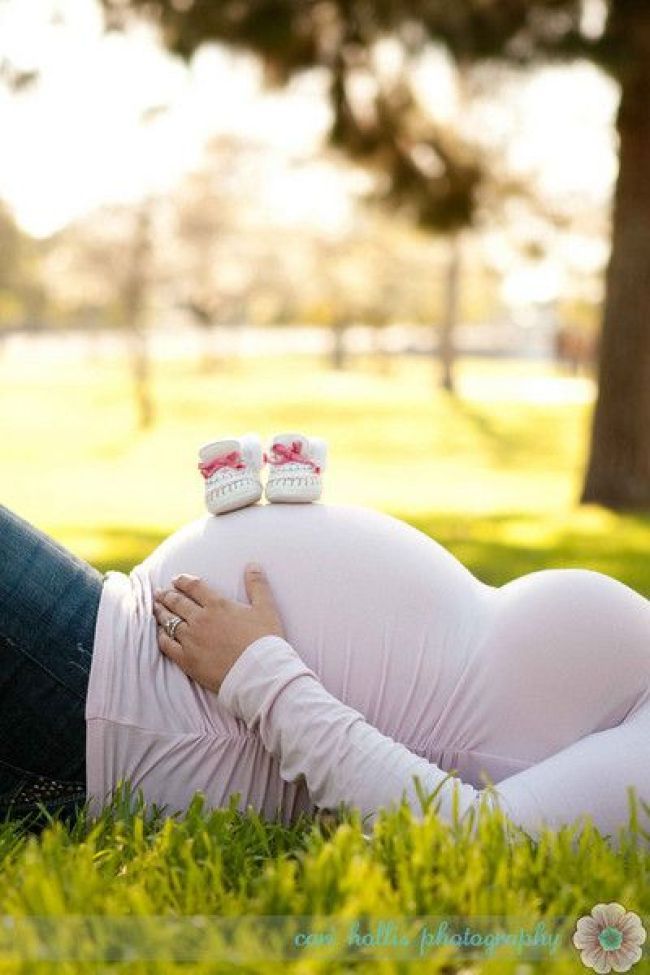 Epilepsy Res. 1999;33:145–158. [PubMed] [Google Scholar]
Epilepsy Res. 1999;33:145–158. [PubMed] [Google Scholar]
135. Vajda FJ, Hitchcock AA, Graham J, O’Brien TJ, Lander CM, Eadie MJ. The teratogenic risk of antiepileptic drug polytherapy. Epilepsia. 2010;51:805–810. [PubMed] [Google Scholar]
136. Kennedy D, Koren G. Valproic acid use in psychiatry: issues in treating women of reproductive age. J Psychiatry Neurosci. 1998;23:223–228. [PMC free article] [PubMed] [Google Scholar]
137. Mountain KR, Hirsh J, Gallus AS. Neonatal coagulation defect due to anticonvulsant drug treatment in pregnancy. Lancet. 1970;1:265–268. [PubMed] [Google Scholar]
138. Ebbesen F, Joergensen A, Hoseth E, et al. Neonatal hypoglycaemia and withdrawal symptoms after exposure in utero to valproate. Arch Dis Child Fetal Neonatal Ed. 2000;83:F124–F129. [PMC free article] [PubMed] [Google Scholar]
139. Thisted E, Ebbesen F. Malformations, withdrawal manifestations, and hypoglycaemia after exposure to valproate in utero. Arch Dis Child. 1993;69:288–291.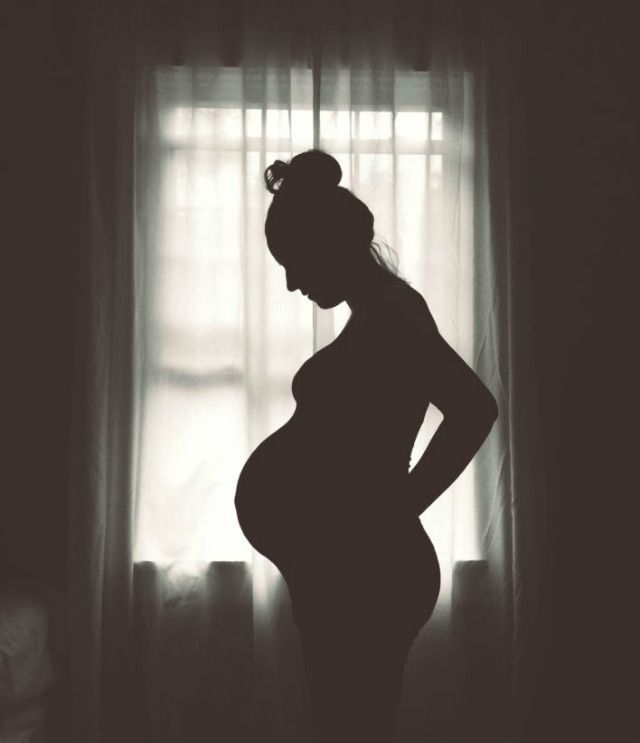 [PMC free article] [PubMed] [Google Scholar]
[PMC free article] [PubMed] [Google Scholar]
140. Pennell PB, Klein AM, Browning N, et al. Differential effects of antiepileptic drugs on neonatal outcomes. Epilepsy Behav. 2012;24:449–456. [PMC free article] [PubMed] [Google Scholar]
141. Meador KJ, Baker GA, Browning N, et al. Fetal antiepileptic drug exposure and cognitive outcomes at age 6 years (NEAD study): a prospective observational study. Lancet Neurol. 2013;12:244–252. [PMC free article] [PubMed] [Google Scholar]
142. Gaily E, Kantola-Sorsa E, Hiilesmaa V, et al. Normal intelligence in children with prenatal exposure to carbamazepine. Neurology. 2004;62:28–32. [PubMed] [Google Scholar]
143. Vinten J, Adab N, Kini U, Gorry J, Gregg J, Baker GA. Neuropsychological effects of exposure to anticonvulsant medication in utero. Neurology. 2005;64:949–954. [PubMed] [Google Scholar]
144. Adab N, Kini U, Vinten J, et al. The longer term outcome of children born to mothers with epilepsy. J Neurol Neurosurg Psychiatry. 2004;75:1575–1583. [PMC free article] [PubMed] [Google Scholar]
2004;75:1575–1583. [PMC free article] [PubMed] [Google Scholar]
145. Shallcross R, Bromley RL, Cheyne CP, et al. In utero exposure to levetiracetam vs valproate: development and language at 3 years of age. Neurology. 2014;82:213–221. [PubMed] [Google Scholar]
146. Veiby G, Daltveit AK, Schjølberg S, et al. Exposure to antiepileptic drugs in utero and child development: a prospective population-based study. Epilepsia. 2013;54:1462–1472. [PMC free article] [PubMed] [Google Scholar]
147. Meador KJ, Baker GA, Browning N, et al. Foetal antiepileptic drug exposure and verbal versus non-verbal abilities at three years of age. Brain. 2011;134:396–404. [PMC free article] [PubMed] [Google Scholar]
148. Cohen MJ, Meador KJ, Browning N, et al. Fetal antiepileptic drug exposure: adaptive and emotional/behavioral functioning at age 6 years. Epilepsy Behav. 2013;29:308–315. [PMC free article] [PubMed] [Google Scholar]
149. Adab N, Jacoby A, Smith D, Chadwick D. Additional educational needs in children born to mothers with epilepsy. J Neurol Neurosurg Psychiatry. 2001;70:15–21. [PMC free article] [PubMed] [Google Scholar]
J Neurol Neurosurg Psychiatry. 2001;70:15–21. [PMC free article] [PubMed] [Google Scholar]
150. Rasalam AD, Hailey H, Williams JH, et al. Characteristics of fetal anticonvulsant syndrome associated autistic disorder. Dev Med Child Neurol. 2005;47:551–555. [PubMed] [Google Scholar]
151. Bromley RL, Mawer G, Clayton-Smith J, Baker GA. Autism spectrum disorders following in utero exposure to antiepileptic drugs. Neurology. 2008;71:1923–1924. [PubMed] [Google Scholar]
152. Bromley RL, Mawer GE, Briggs M, et al. The prevalence of neurodevelopmental disorders in children prenatally exposed to antiepileptic drugs. J Neurol Neurosurg Psychiatry. 2013;84:637–643. [PMC free article] [PubMed] [Google Scholar]
153. Bescoby-Chambers N, Forster P, Bates G. ‘Foetal valproate syndrome and autism: additional evidence of an association’ [comment] Dev Med Child Neurol. 2001;43:847. [PubMed] [Google Scholar]
154. Williams G, King J, Cunningham M, Stephan M, Kerr B, Hersh JH. Fetal valproate syndrome and autism: additional evidence of an association.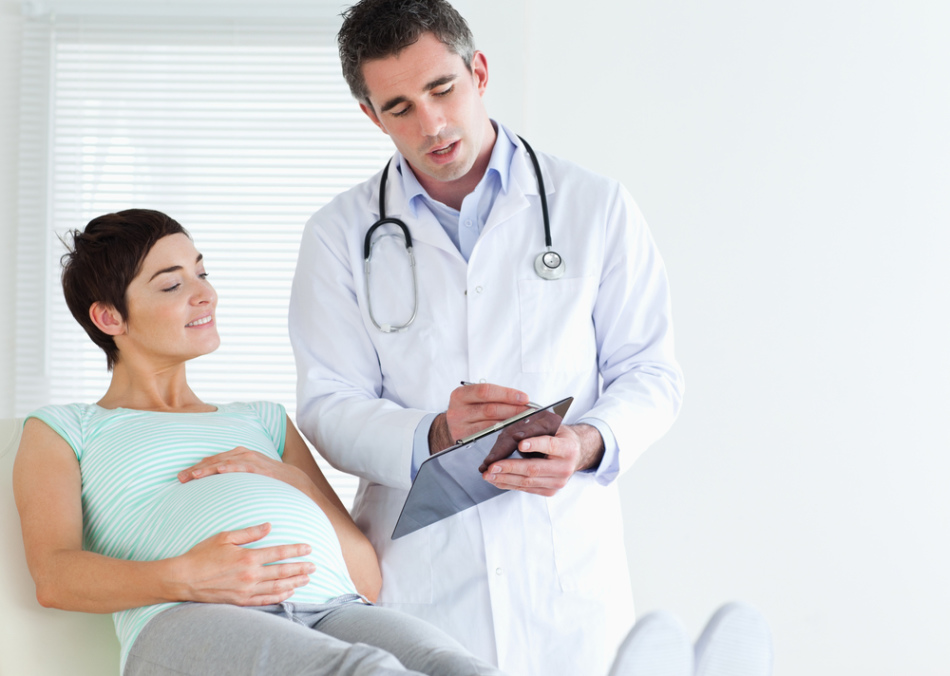 Dev Med Child Neurol. 2001;43:202–206. [PubMed] [Google Scholar]
Dev Med Child Neurol. 2001;43:202–206. [PubMed] [Google Scholar]
155. Jentink J, Dolk H, Loane MA, et al. Intrauterine exposure to carbamazepine and specific congenital malformations: systematic review and case-control study. BMJ. 2010;341:c6581. [PMC free article] [PubMed] [Google Scholar]
156. Matalon S, Schechtman S, Goldzweig G, Ornoy A. The teratogenic effect of carbamazepine: a meta-analysis of 1255 exposures. Reprod Toxicol. 2002;16:9–17. [PubMed] [Google Scholar]
157. Tomson T, Battino D. Teratogenic effects of antiepileptic medications. Neurol Clin. 2009;27:993–1002. [PubMed] [Google Scholar]
158. Samrén EB, van Duijn CM, Christiaens GC, Hofman A, Lindhout D. Antiepileptic drug regimens and major congenital abnormalities in the offspring. Ann Neurol. 1999;46:739–746. [PubMed] [Google Scholar]
159. Hernández-Díaz S, Werler MM, Walker AM, Mitchell AA. Neural tube defects in relation to use of folic acid antagonists during pregnancy. Am J Epidemiol. 2001;153:961–968. [PubMed] [Google Scholar]
[PubMed] [Google Scholar]
160. Jones KL, Lacro RV, Johnson KA, Adams J. Pattern of malformations in the children of women treated with carbamazepine during pregnancy. N Engl J Med. 1989;320:1661–1666. [PubMed] [Google Scholar]
161. Ornoy A, Cohen E. Outcome of children born to epileptic mothers treated with carbamazepine during pregnancy. Arch Dis Child. 1996;75:517–520. [PMC free article] [PubMed] [Google Scholar]
162. Wide K, Winbladh B, Tomson T, Sars-Zimmer K, Berggren E. Psychomotor development and minor anomalies in children exposed to antiepileptic drugs in utero: a prospective population-based study. Dev Med Child Neurol. 2000;42:87–92. [PubMed] [Google Scholar]
163. Nulman I, Scolnik D, Chitayat D, Farkas LD, Koren G. Findings in children exposed in utero to phenytoin and carbamazepine monotherapy: independent effects of epilepsy and medications. Am J Med Genet. 1997;68:18–24. [PubMed] [Google Scholar]
164. Diav-Citrin O, Shechtman S, Arnon J, Ornoy A.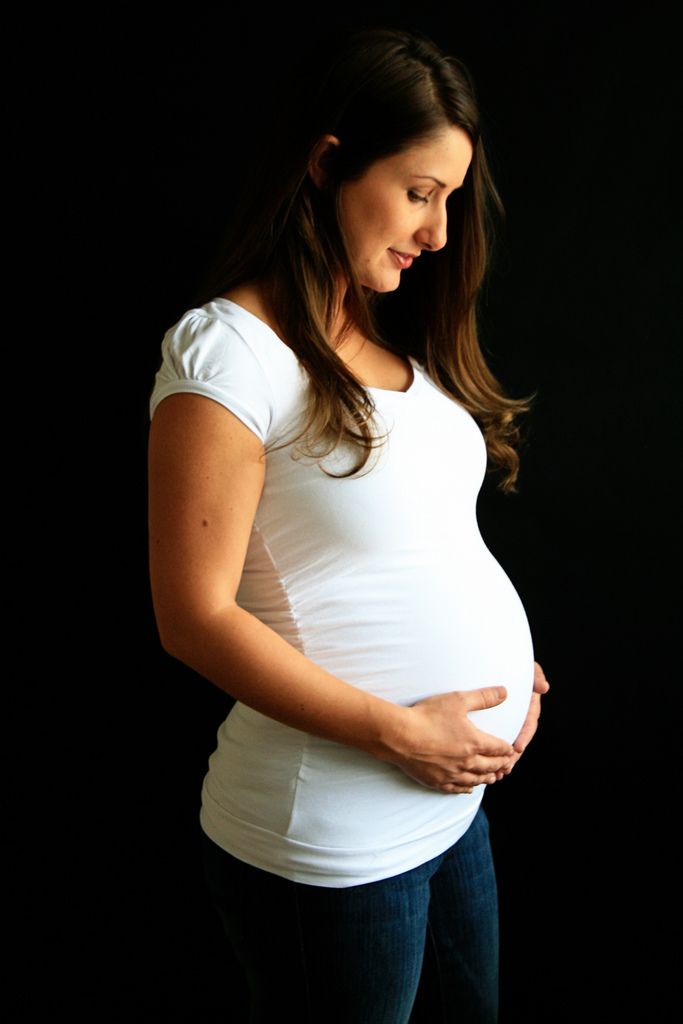 Is carbamazepine teratogenic? A prospective controlled study of 210 pregnancies. Neurology. 2001;57:321–324. [PubMed] [Google Scholar]
Is carbamazepine teratogenic? A prospective controlled study of 210 pregnancies. Neurology. 2001;57:321–324. [PubMed] [Google Scholar]
165. Iqbal MM, Gundlapalli SP, Ryan WG, Ryals T, Passman TE. Effects of antimanic mood-stabilizing drugs on fetuses, neonates, and nursing infants. South Med J. 2001;94:304–322. [PubMed] [Google Scholar]
166. Holmes LB, Coull BA, Dorfman J, Rosenberger PB. The correlation of deficits in IQ with midface and digit hypoplasia in children exposed in utero to anticonvulsant drugs. J Pediatr. 2005;146:118–122. [PubMed] [Google Scholar]
167. Titze K, Koch S, Helge H, Lehmkuhl U, Rauh H, Steinhausen HC. Prenatal and family risks of children born to mothers with epilepsy: effects on cognitive development. Dev Med Child Neurol. 2008;50:117–122. [PubMed] [Google Scholar]
168. Cunnington M, Tennis P. Lamotrigine and the risk of malformations in pregnancy. Neurology. 2005;64:955–960. [PubMed] [Google Scholar]
169. Tennis P, Eldridge RR. Preliminary results on pregnancy outcomes in women using lamotrigine. Epilepsia. 2002;43:1161–1167. [PubMed] [Google Scholar]
Preliminary results on pregnancy outcomes in women using lamotrigine. Epilepsia. 2002;43:1161–1167. [PubMed] [Google Scholar]
170. Cunnington MC, Weil JG, Messenheimer JA, Ferber S, Yerby M, Tennis P. Final results from 18 years of the International Lamotrigine Pregnancy Registry. Neurology. 2011;76:1817–1823. [PubMed] [Google Scholar]
171. Meador KJ, Baker GA, Finnell RH, et al. In utero antiepileptic drug exposure: fetal death and malformations. Neurology. 2006;67:407–412. [PMC free article] [PubMed] [Google Scholar]
172. Holmes LB, Baldwin EJ, Smith CR, et al. Increased frequency of isolated cleft palate in infants exposed to lamotrigine during pregnancy. Neurology. 2008;70:2152–2158. [PubMed] [Google Scholar]
173. Dolk H, Jentink J, Loane M, Morris J, de Jong-van den Berg LT. Does lamotrigine use in pregnancy increase orofacial cleft risk relative to other malformations? Neurology. 2008;71:714–722. [PubMed] [Google Scholar]
174. Sabers A, Dam M, A-Rogvi-Hansen B, et al. Epilepsy and pregnancy: lamotrigine as main drug used. Acta Neurol Scand. 2004;109:9–13. [PubMed] [Google Scholar]
Epilepsy and pregnancy: lamotrigine as main drug used. Acta Neurol Scand. 2004;109:9–13. [PubMed] [Google Scholar]
175. Mølgaard-Nielsen D, Hviid A. Newer-generation antiepileptic drugs and the risk of major birth defects. JAMA. 2011;305:1996–2002. [PubMed] [Google Scholar]
176. Cunnington M, Ferber S, Quartey G. Effect of dose on the frequency of major birth defects following fetal exposure to lamotrigine mono-therapy in an international observational study. Epilepsia. 2007;48:1207–1210. [PubMed] [Google Scholar]
177. Vajda FJ, Graham JE, Hitchcock AA, O’Brien TJ, Lander CM, Eadie MJ. Is lamotrigine a significant human teratogen? Observations from the Australian Pregnancy Register. Seizure. 2010;19:558–561. [PubMed] [Google Scholar]
178. Gentile S. Antipsychotic therapy during early and late pregnancy. A systematic review. Schizophr Bull. 2010;36:518–544. [PMC free article] [PubMed] [Google Scholar]
179. Einarson A, Boskovic R. Use and safety of antipsychotic drugs during pregnancy.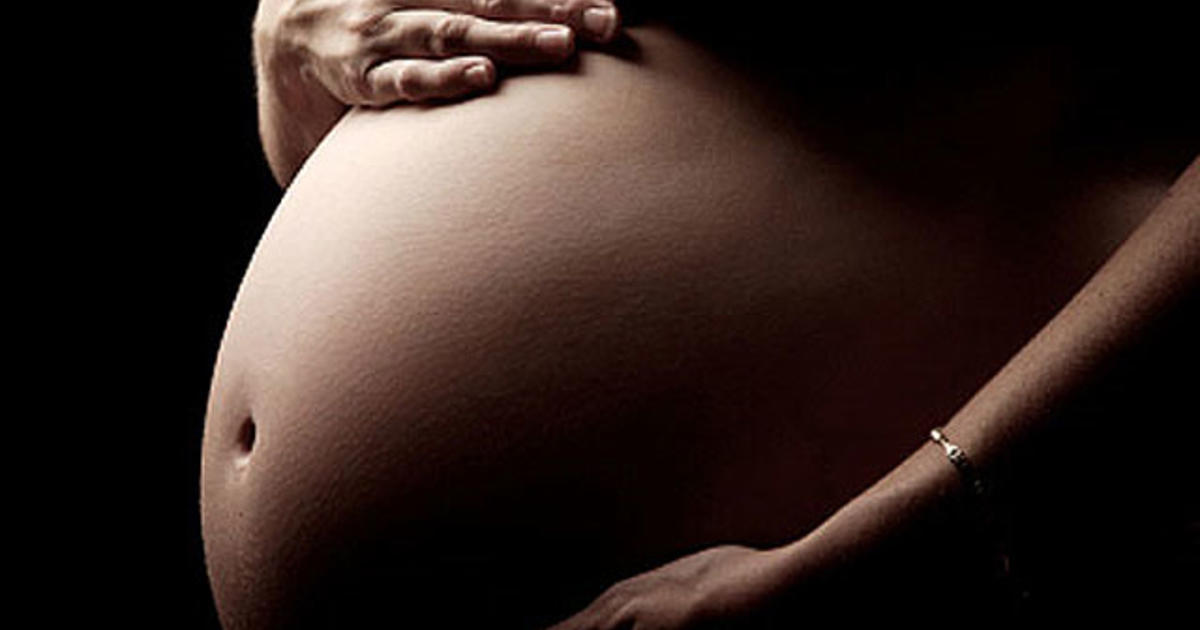 J Psychiatr Pract. 2009;15:183–192. [PubMed] [Google Scholar]
J Psychiatr Pract. 2009;15:183–192. [PubMed] [Google Scholar]
180. Diav-Citrin O, Shechtman S, Ornoy S, et al. Safety of haloperidol and penfluridol in pregnancy: a multicenter, prospective, controlled study. J Clin Psychiatry. 2005;66:317–322. [PubMed] [Google Scholar]
181. Coppola D, Russo LJ, Kwarta RF, Jr, Varughese R, Schmider J. Evaluating the postmarketing experience of risperidone use during pregnancy: pregnancy and neonatal outcomes. Drug Saf. 2007;30:247–264. [PubMed] [Google Scholar]
182. Goldstein DJ, Corbin LA, Fung MC. Olanzapine-exposed pregnancies and lactation: early experience. J Clin Psychopharmacol. 2000;20:399–403. [PubMed] [Google Scholar]
183. McKenna K, Koren G, Tetelbaum M, et al. Pregnancy outcome of women using atypical antipsychotic drugs: a prospective comparative study. J Clin Psychiatry. 2005;66:444–449. [PubMed] [Google Scholar]
184. Reis M, Kallen B. Maternal use of antipsychotics in early pregnancy and delivery outcome. J Clin Psychopharmacol. 2008;28:279–288. [PubMed] [Google Scholar]
2008;28:279–288. [PubMed] [Google Scholar]
185. Tényi T, Trixler M, Keresztes Z. Quetiapine and pregnancy. Am J Psychiatry. 2002;159:674. [PubMed] [Google Scholar]
186. Taylor TM, O’Toole MS, Ohlsen RI, Walters J, Pilowsky LS. Safety of quetiapine during pregnancy. Am J Psychiatry. 2003;160:588–589. [PubMed] [Google Scholar]
187. Gentile S. Quetiapine-fluvoxamine combination during pregnancy and while breastfeeding. Arch Womens Ment Health. 2006;9:158–159. [PubMed] [Google Scholar]
188. Yaeger D, Smith HG, Altshuler LL. Atypical antipsychotics in the treatment of schizophrenia during pregnancy and the postpartum. Am J Psychiatry. 2006;163:2064–2070. [PubMed] [Google Scholar]
189. Mendhekar DN, Sunder KR, Andrade C. Aripiprazole use in a pregnant schizoaffective woman. Bipolar Disord. 2006;8:299–300. [PubMed] [Google Scholar]
190. Kulkarni J, Cauley-Elsom K, Marston N, et al. Preliminary findings from the National Register of Antipsychotic Medication in Pregnancy. Aust N Z J Psychiatry. 2008;42:38–44. [PubMed] [Google Scholar]
Aust N Z J Psychiatry. 2008;42:38–44. [PubMed] [Google Scholar]
191. U.S. Food and Drug Administration FDA Drug Safety Communication: Antipsychotic drug labels updated on use during pregnancy and risk of abnormal muscle movements and withdrawl symptoms in newborns. Issued February 2, 2011. [Accessed on December 1, 2014]. Available online http://www.fda.gov/Drugs/DrugSafety/ucm243903.htm.
192. Newcomer JW. Second-generation (atypical) antipsychotics and metabolic effects: a comprehensive literature review. CNS Drugs. 2005;19(Suppl 1):1–93. [PubMed] [Google Scholar]
193. Newham JJ, Thomas SH, MacRitchie K, McElhatton PR, McAllister-Williams RH. Birth weight of infants after maternal exposure to typical and atypical antipsychotics: prospective comparison study. Br J Psychiatry. 2008;192:333–337. [PubMed] [Google Scholar]
194. Babu GN, Desai G, Tippeswamy H, Chandra PS. Birth weight and use of olanzapine in pregnancy: a prospective comparative study. J Clin Psychopharmacol. 2010;30:331–332. [PubMed] [Google Scholar]
2010;30:331–332. [PubMed] [Google Scholar]
195. Newport DJ, Calamaras MR, DeVane CL, et al. Atypical antipsychotic administration during late pregnancy: placental passage and obstetrical outcomes. Am J Psychiatry. 2007;164:1214–1220. [PubMed] [Google Scholar]
196. Bodén R, Lundgren M, Brandt L, Reutfors J, Kieler H. Antipsychotics during pregnancy: relation to fetal and maternal metabolic effects. Arch Gen Psychiatry. 2012;69:715–721. [PubMed] [Google Scholar]
197. Johnson KC, LaPrairie JL, Brennan PA, Stowe ZN, Newport DJ. Prenatal antipsychotic exposure and neuromotor performance during infancy. Arch Gen Psychiatry. 2012;69:787–794. [PMC free article] [PubMed] [Google Scholar]
198. Miller LJ. Use of electroconvulsive therapy during pregnancy. Hosp Community Psychiatry. 1994;45:444–450. [PubMed] [Google Scholar]
199. Anderson EL, Reti IM. ECT in pregnancy: a review of the literature from 1941 to 2007. Psychosom Med. 2009;71:235–242. [PubMed] [Google Scholar]
200. Rabheru K. The use of electroconvulsive therapy in special patient populations. Can J Psychiatry. 2001;46:710–719. [PubMed] [Google Scholar]
Rabheru K. The use of electroconvulsive therapy in special patient populations. Can J Psychiatry. 2001;46:710–719. [PubMed] [Google Scholar]
201. Briggs GG. Drugs in Pregnancy and Lactation: A Reference Guide to Fetal and Neonatal Risk. 9th ed. Philadelphia: Lippincott Williams & Wilkins; 2011. [Google Scholar]
202. Freeman MP, Smith KW, Freeman SA, et al. The impact of reproductive events on the course of bipolar disorder in women. J Clin Psychiatry. 2002;63:284–287. [PubMed] [Google Scholar]
203. Viguera AC, Cohen LJ, Tondo L, Baldessarini RJ. Protective effect of pregnancy on the course of lithium-responsive bipolar I disorder. J Affect Disord. 2002;72:107–108. [PubMed] [Google Scholar]
204. Grof P, Robbins W, Alda M, et al. Protective effect of pregnancy in women with lithium-responsive bipolar disorder. J Affect Disord. 2000;61:31–39. [PubMed] [Google Scholar]
205. Sharma V, Pope CJ. Pregnancy and bipolar disorder: a systematic review. J Clin Psychiatry. 2012;73:1447–1455. [PubMed] [Google Scholar]
2012;73:1447–1455. [PubMed] [Google Scholar]
206. Clark CT, Wisner KL. Response to Sharma and Sommerdyk. Am J Psychiatry. 2014;171:371. [PMC free article] [PubMed] [Google Scholar]
207. Fried S, Kozer E, Nulman I, Einarson TR, Koren G. Malformation rates in children of women with untreated epilepsy: a meta-analysis. Drug Saf. 2004;27:197–202. [PubMed] [Google Scholar]
208. Nguyen HT, Sharma V, McIntyre RS. Teratogenesis associated with antibipolar agents. Adv Ther. 2009;26:281–294. [PubMed] [Google Scholar]
209. Bromfield EB, Dworetzky BA, Wyszynski DF, Smith CR, Baldwin EJ, Holmes LB. Valproate teratogenicity and epilepsy syndrome. Epilepsia. 2008;49:2122–2124. [PubMed] [Google Scholar]
210. Morrow JI, Hunt SJ, Russell AJ, et al. Folic acid use and major congenital malformations in offspring of women with epilepsy: a prospective study from the UK Epilepsy and Pregnancy Register. J Neurol Neurosurg Psychiatry. 2009;80:506–511. [PubMed] [Google Scholar]
211. Jentink J, Bakker MK, Nijenhuis CM, Wilffert B, de Jong-van den Berg LT. Does folic acid use decrease the risk for spina bifida after in utero exposure to valproic acid? Pharmacoepidemiol Drug Saf. 2010;19:803–807. [PubMed] [Google Scholar]
Jentink J, Bakker MK, Nijenhuis CM, Wilffert B, de Jong-van den Berg LT. Does folic acid use decrease the risk for spina bifida after in utero exposure to valproic acid? Pharmacoepidemiol Drug Saf. 2010;19:803–807. [PubMed] [Google Scholar]
212. Centers for Disease Control and Prevention Folic acid. 2014. [Accessed October 27, 2014]. Available from: http://www.cdc.gov/ncbddd/folicacid/index.html.
213. Yerby MS. Management issues for women with epilepsy: neural tube defects and folic acid supplementation. Neurology. 2003;61:S23–S26. [PubMed] [Google Scholar]
214. Cohen LS, Wang B, Nonacs R, Viguera AC, Lemon EL, Freeman MP. Treatment of mood disorders during pregnancy and postpartum. Psychiatr Clin North Am. 2010;33:273–293. [PubMed] [Google Scholar]
215. Vieta E, Langosch JM, Figueira ML, et al. Clinical management and burden of bipolar disorder: results from a multinational longitudinal study (WAVE-bd) Int J Neuropsychopharmacol. 2013;16:1719–1732. [PubMed] [Google Scholar]
216. Pillarella J, Higashi A, Alexander GC, Conti R. Trends in use of second-generation antipsychotics for treatment of bipolar disorder in the United States, 1998–2009. Psychiatr Serv. 2012;63:83–86. [PMC free article] [PubMed] [Google Scholar]
Pillarella J, Higashi A, Alexander GC, Conti R. Trends in use of second-generation antipsychotics for treatment of bipolar disorder in the United States, 1998–2009. Psychiatr Serv. 2012;63:83–86. [PMC free article] [PubMed] [Google Scholar]
217. Depp C, Ojeda VD, Mastin W, Unutzer J, Gilmer TP. Trends in use of antipsychotics and mood stabilizers among Medicaid beneficiaries with bipolar disorder, 2001–2004. Psychiatr Serv. 2008;59:1169–1174. [PubMed] [Google Scholar]
218. Bobo WV, Cooper WO, Stein CM, et al. Antipsychotics and the risk of type 2 diabetes mellitus in children and youth. JAMA Psychiatry. 2013;70:1067–1075. [PubMed] [Google Scholar]
219. Lambert BL, Cunningham FE, Miller DR, Dalack GW, Hur K. Diabetes risk associated with use of olanzapine, quetiapine, and risperidone in Veterans Health Administration patients with schizophrenia. Am J Epidemiol. 2006;164:672–681. [PubMed] [Google Scholar]
220. Hendricks KA, Nuno OM, Suarez L, Larsen R. Effects of hyperin-sulinemia and obesity on risk of neural tube defects among Mexican Americans.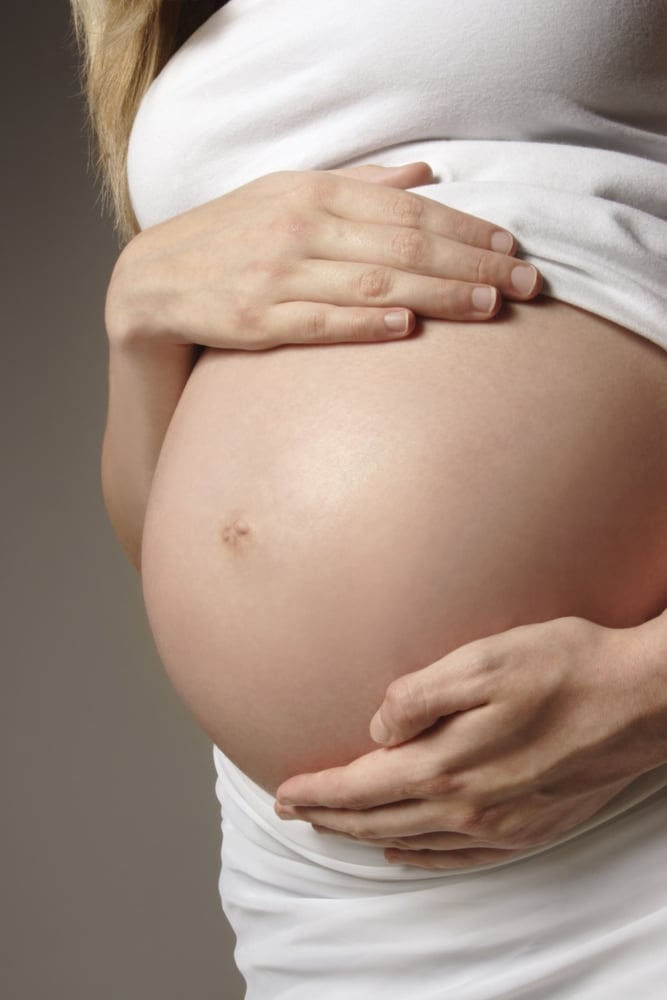 Epidemiology. 2001;12:630–635. [PubMed] [Google Scholar]
Epidemiology. 2001;12:630–635. [PubMed] [Google Scholar]
221. Shaw GM, Todoroff K, Finnell RH, Lammer EJ. Spina bifida phenotypes in infants or fetuses of obese mothers. Teratology. 2000;61:376–381. [PubMed] [Google Scholar]
222. Watkins ML, Rasmussen SA, Honein MA, Botto LD, Moore CA. Maternal obesity and risk for birth defects. Pediatrics. 2003;111:1152–1158. [PubMed] [Google Scholar]
223. Ray JG, Wyatt PR, Vermeulen MJ, Meier C, Cole DE. Greater maternal weight and the ongoing risk of neural tube defects after folic acid flour fortification. Obstet Gynecol. 2005;105:261–265. [PubMed] [Google Scholar]
224. Mikhail LN, Walker CK, Mittendorf R. Association between maternal obesity and fetal cardiac malformations in African Americans. J Natl Med Assoc. 2002;94:695–700. [PMC free article] [PubMed] [Google Scholar]
225. Cedergren MI, Källén BA. Maternal obesity and infant heart defects. Obes Res. 2003;11:1065–1071. [PubMed] [Google Scholar]
226. Judd LL, Akiskal HS, Schettler PJ, et al.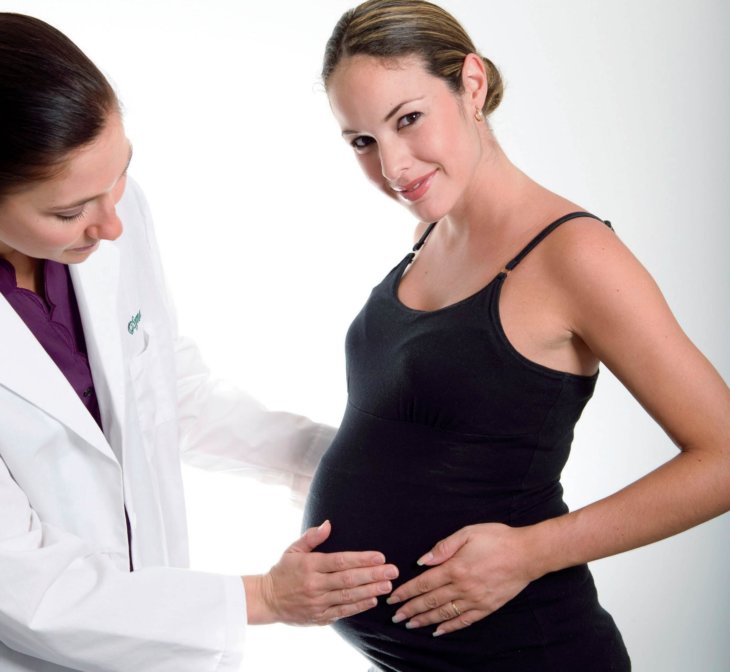 A prospective investigation of the natural history of the long-term weekly symptomatic status of bipolar II disorder. Arch Gen Psychiatry. 2003;60:261–269. [PubMed] [Google Scholar]
A prospective investigation of the natural history of the long-term weekly symptomatic status of bipolar II disorder. Arch Gen Psychiatry. 2003;60:261–269. [PubMed] [Google Scholar]
227. Goldberg JF, Garno JL, Harrow M. Long-term remission and recovery in bipolar disorder: a review. Curr Psychiatry Rep. 2005;7:456–461. [PubMed] [Google Scholar]
228. Craig TJ, Grossman S, Mojtabai R, et al. Medication use patterns and 2-year outcome in first-admission bipolar disorder with psychotic features. Bipolar Disord. 2004;6:406–415. [PubMed] [Google Scholar]
229. Baldessarini R, Henk H, Sklar A, Chang J, Leahy L. Psychotropic medications for patients with bipolar disorder in the United States: polytherapy and adherence. Psychiatr Serv. 2008;59:1175–1183. [PubMed] [Google Scholar]
230. Antenatal and Postnatal Mental Health: National Institute for Health and Care Excellence . The NICE Guideline on Clinical Management and Service Guidance. NICE; 2007. [Google Scholar]
231.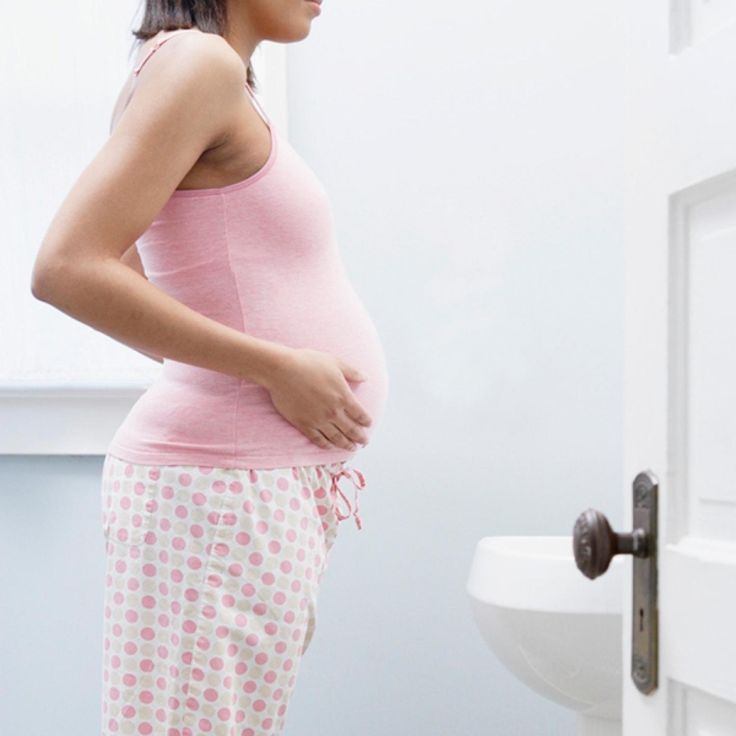 Wisner KL. The last therapeutic orphan: the pregnant woman. Am J Psychiatry. 2012;169:554–556. [PMC free article] [PubMed] [Google Scholar]
Wisner KL. The last therapeutic orphan: the pregnant woman. Am J Psychiatry. 2012;169:554–556. [PMC free article] [PubMed] [Google Scholar]
232. Abel KM. Fetal antipsychotic exposure in a changing landscape: seeing the future. Br J Psychiatry. 2013;202:321–323. [PubMed] [Google Scholar]
233. ACOG Committee on Practice Bulletins – Obstetrics ACOG Practice Bulletin: Clinical management guidelines for obstetrician-gynecologists number 92, April 2008 (replaces practice bulletin number 87, November 2007). Use of psychiatric medications during pregnancy and lactation. Obstet Gynecol. 2008;111:1001–1020. [PubMed] [Google Scholar]
234. Yonkers KA, Wisner KL, Stowe Z, et al. Management of bipolar disorder during pregnancy and the postpartum period. Am J Psychiatry. 2004;161:608–620. [PubMed] [Google Scholar]
235. Malhi GS, Adams D, Lampe L, et al. Clinical practice recommendations for bipolar disorder. Acta Psychiatr Scand Suppl. 2009:27–46. [PubMed] [Google Scholar]
236.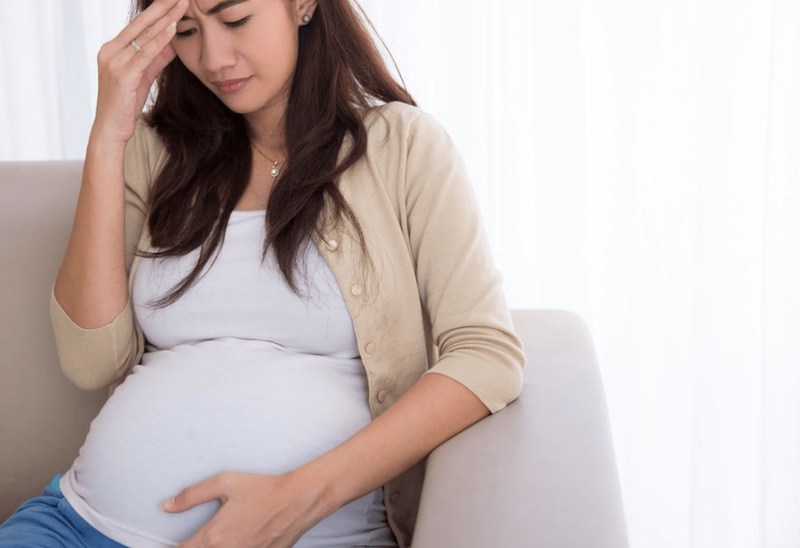 Llorca PM, Courtet P, Martin P, et al. Screening and management of bipolar disorders: results. Encephale. 2010;36(Suppl 4):S86–S102. French. [PubMed] [Google Scholar]
Llorca PM, Courtet P, Martin P, et al. Screening and management of bipolar disorders: results. Encephale. 2010;36(Suppl 4):S86–S102. French. [PubMed] [Google Scholar]
237. Samalin L, Guillaume S, Courtet P, Abbar M, Lancrenon S, Llorca PM. Methodological differences between pharmacological treatment guidelines for bipolar disorder: what to do for the clinicians? Compr Psychiatry. 2013;54:309–320. [PubMed] [Google Scholar]
238. Heffner JL, DelBello MP, Fleck DE, Adler CM, Strakowski SM. Unplanned pregnancies in adolescents with bipolar disorder. Am J Psychiatry. 2012;169:1319. [PMC free article] [PubMed] [Google Scholar]
239. Freeman MP. Bipolar disorder and pregnancy: risks revealed. Am J Psychiatry. 2007;164:1771–1773. [PubMed] [Google Scholar]
240. Nivoli AM, Murru A, Goikolea JM, et al. New treatment guidelines for acute bipolar mania: a critical review. J Affect Disord. 2012;140:125–141. [PubMed] [Google Scholar]
241. Altshuler LL, Cohen L, Szuba MP, Burt VK, Gitlin M, Mintz J.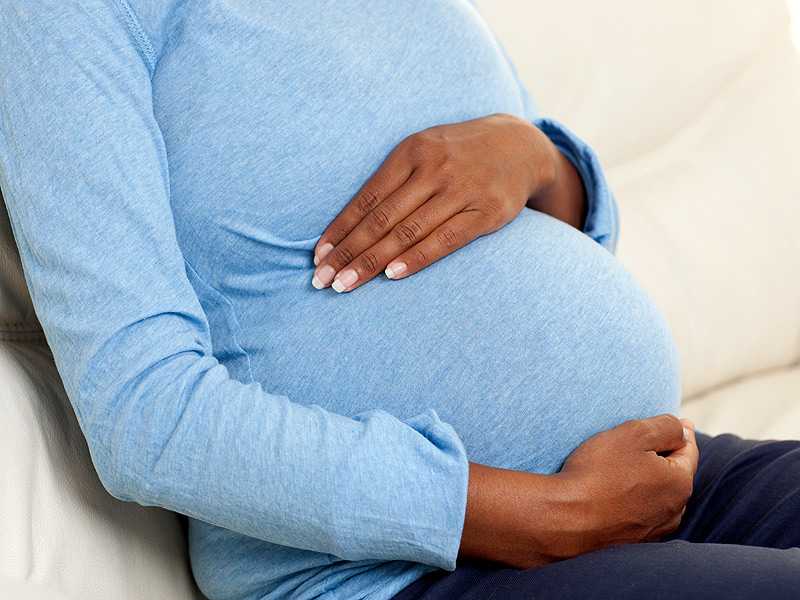 Pharmacologic management of psychiatric illness during pregnancy: dilemmas and guidelines. Am J Psychiatry. 1996;153:592–606. [PubMed] [Google Scholar]
Pharmacologic management of psychiatric illness during pregnancy: dilemmas and guidelines. Am J Psychiatry. 1996;153:592–606. [PubMed] [Google Scholar]
242. Cohen LS. Treatment of bipolar disorder during pregnancy. J Clin Psychiatry. 2007;68(Suppl 9):4–9. [PubMed] [Google Scholar]
243. Burt VK, Bernstein C, Rosenstein WS, Altshuler LL. Bipolar disorder and pregnancy: maintaining psychiatric stability in the real world of obstetric and psychiatric complications. Am J Psychiatry. 2010;167:892–897. [PubMed] [Google Scholar]
244. Yerby MS, Friel PN, McCormick K. Antiepileptic drug disposition during pregnancy. Neurology. 1992;42:12–16. [PubMed] [Google Scholar]
245. Sabers A, Tomson T. Managing antiepileptic drugs during pregnancy and lactation. Curr Opin Neurol. 2009;22:157–161. [PubMed] [Google Scholar]
246. Clark CT, Klein AM, Perel JM, Helsel J, Wisner KL. Lamotrigine dosing for pregnant patients with bipolar disorder. Am J Psychiatry. 2013;170:1240–1247. [PMC free article] [PubMed] [Google Scholar]
247.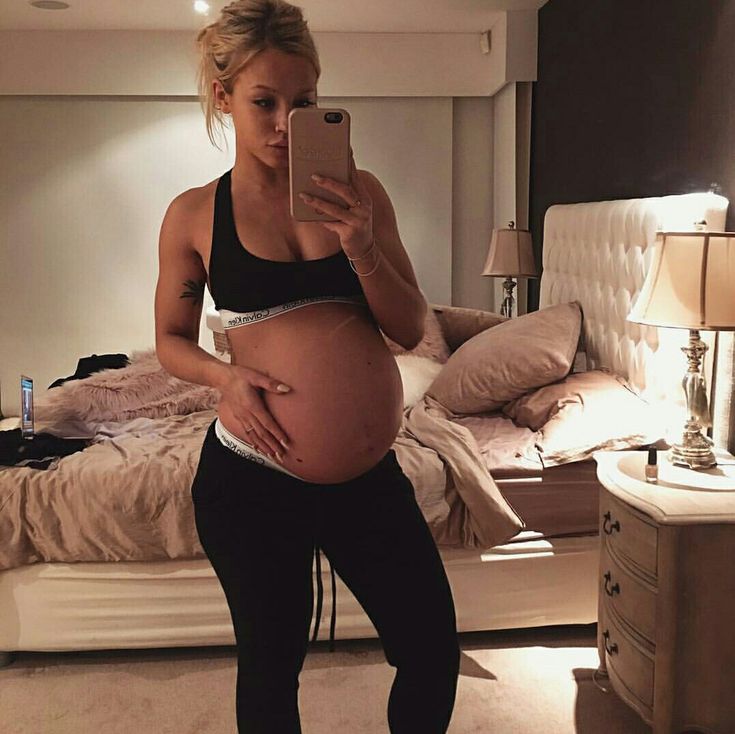 Zhang Y, Yang H, Yang S, et al. Antidepressants for bipolar disorder: a meta-analysis of randomized, double-blind, controlled trials. Neural Regen Res. 2013;8:2962–2974. [PMC free article] [PubMed] [Google Scholar]
Zhang Y, Yang H, Yang S, et al. Antidepressants for bipolar disorder: a meta-analysis of randomized, double-blind, controlled trials. Neural Regen Res. 2013;8:2962–2974. [PMC free article] [PubMed] [Google Scholar]
248. Sharma V. Considerations in the pharmacotherapy of bipolar disorder during and after pregnancy. Curr Drug Saf. 2011;6:318–323. [PubMed] [Google Scholar]
249. Altshuler L, Suppes T, Black D, et al. Impact of antidepressant discontinuation after acute bipolar depression remission on rates of depressive relapse at 1-year follow-up. Am J Psychiatry. 2003;160:1252–1262. [PubMed] [Google Scholar]
250. Post RM, Leverich GS, Nolen WA, et al. A re-evaluation of the role of antidepressants in the treatment of bipolar depression: data from the Stanley Foundation Bipolar Network. Bipolar Disord. 2003;5:396–406. [PubMed] [Google Scholar]
251. Gitlin M. Treatment-resistant bipolar disorder. Mol Psychiatry. 2006;11:227–240. [PubMed] [Google Scholar]
252. Wang PW, Ketter TA.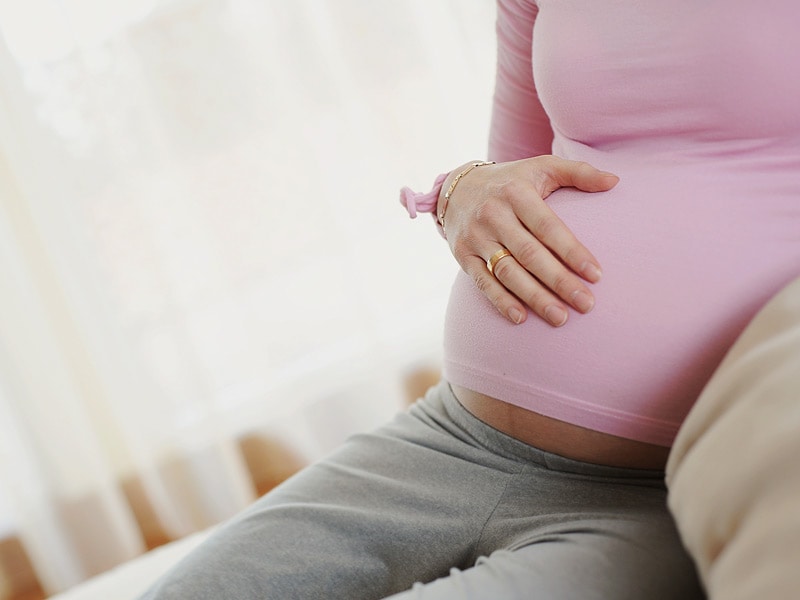 Pharmacokinetics of mood stabilizers and new anticonvulsants. Psychopharmacol Bull. 2002;36:44–66. [PubMed] [Google Scholar]
Pharmacokinetics of mood stabilizers and new anticonvulsants. Psychopharmacol Bull. 2002;36:44–66. [PubMed] [Google Scholar]
253. Kazmin A, Wong RC, Sermer M, Koren G. Antiepileptic drugs in pregnancy and hemorrhagic disease of the newborn. Can Fam Physician. 2010;56:1291–1292. [PMC free article] [PubMed] [Google Scholar]
254. Harden CL, Pennell PB, Koppel BS, et al. Management issues for women with epilepsy – focus on pregnancy (an evidence-based review): III. Vitamin K, folic acid, blood levels, and breast-feeding: Report of the Quality Standards Subcommittee and Therapeutics and Technology Assessment Subcommittee of the American Academy of Neurology and the American Epilepsy Society. Epilepsia. 2009;50:1247–1255. [PubMed] [Google Scholar]
255. Stowe ZN. The use of mood stabilizers during breastfeeding. J Clin Psychiatry. 2007;68(Suppl 9):22–28. [PubMed] [Google Scholar]
256. Viguera AC, Newport DJ, Ritchie J, et al. Lithium in breast milk and nursing infants: clinical implications. Am J Psychiatry. 2007;164:342–345. [PubMed] [Google Scholar]
Am J Psychiatry. 2007;164:342–345. [PubMed] [Google Scholar]
257. Bond DJ, Pratoomsri W, Yatham LN. Depot antipsychotic medications in bipolar disorder: a review of the literature. Acta Psychiatr Scand Suppl. 2007;43:3–16. [PubMed] [Google Scholar]
258. Surja AA, Tamas RL, El-Mallakh RS. Antipsychotic medications in the treatment of bipolar disorder. Curr Drug Targets. 2006;7:1217–1224. [PubMed] [Google Scholar]
259. Margolese HC, Chouinard G, Kolivakis TT, Beauclair L, Miller R, Annable L. Tardive dyskinesia in the era of typical and atypical antipsychotics. Part 2: Incidence and management strategies in patients with schizophrenia. Can J Psychiatry. 2005;50:703–714. [PubMed] [Google Scholar]
260. Cooper WO, Hernandez-Diaz S, Gideon P, et al. Positive predictive value of computerized records for major congenital malformations. Pharmacoepidemiol Drug Saf. 2008;17:455–460. [PubMed] [Google Scholar]
261. Bobo WV, Davis RL, Toh S, et al. Trends in the use of antiepileptic drugs among pregnant women in the US, 2001–2007: a medication exposure in pregnancy risk evaluation program study.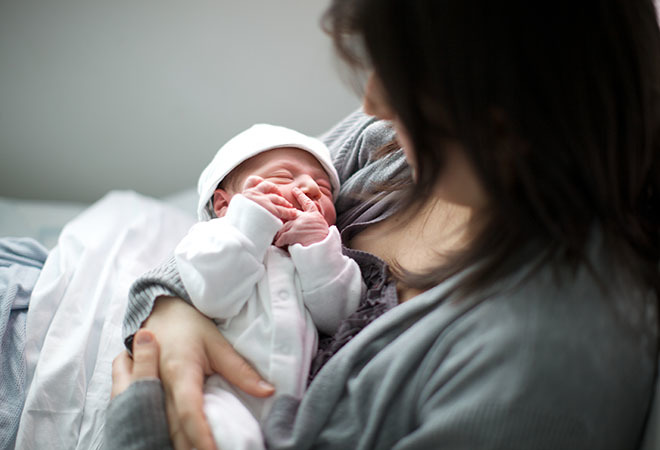 Paediatr Perinat Epidemiol. 2012;26:578–588. [PMC free article] [PubMed] [Google Scholar]
Paediatr Perinat Epidemiol. 2012;26:578–588. [PMC free article] [PubMed] [Google Scholar]
Pregnancy and bipolar disorder. - Bipolar.su
Many girls ask themselves: Is it possible to have children if you have a mental disorder? What difficulties will I face? Is it possible that the disease is inherited? Is it possible to take drugs during pregnancy and if so, which ones?
In each case, of course, this issue is decided individually, taking into account all the risks.
I scanned the pregnancy chapter from Bipolar for Dummies. It provides detailed answers to all these questions.
All women of childbearing age who are being treated for bipolar disorder should discuss contraception and pregnancy with their doctors and have a contingency plan in place in case of an unexpected pregnancy.
These discussions should cover various aspects of reproductive health, both in terms of how bipolar disorder affects pregnancy and how pregnancy affects bipolar disorder.
After all, half of all pregnancies are accidental, and this figure may be higher for women with bipolar disorder because they are at higher risk for irregular menstrual cycles and impulsive sexual behavior.
Deciding whether to get pregnant
Being bipolar doesn't mean you can't have children. Many parents with bipolar disorder raise healthy, well-adjusted children. When you are thinking about having children, ask yourself the following questions and discuss them with someone in your support group who may be involved in or influence your decision.
• What are the chances that my child will develop bipolar disorder?
If only one of the parents has bipolar disorder, then the child has a 5-10% chance of developing the disease. If both parents have it, the risk can be as high as 25%.
• How will drugs affect the development of the fetus?
Many medicines used to treat bipolar disorder can be harmful to the developing fetus.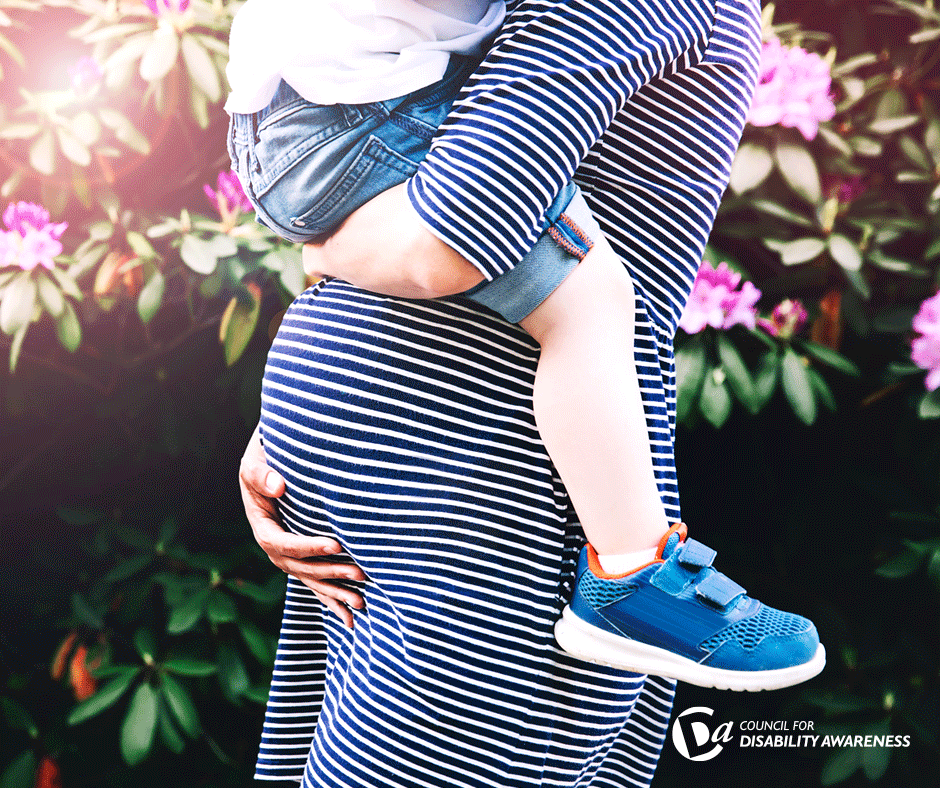 You can choose drugs that have the lowest risk or discuss with your doctor the possibility of stopping drugs during pregnancy.
You can choose drugs that have the lowest risk or discuss with your doctor the possibility of stopping drugs during pregnancy.
• How will pregnancy affect my mood?
Pregnancy and the postpartum period is a time of high risk for mood swings. Careful monitoring during pregnancy and for at least 30 days postpartum can help you and your doctors spot early warning signs.
• Can I deal with stress?
Pregnancy, the birth of a child, its upbringing and the child itself will undoubtedly disrupt the usual life, change relationships and increase stress. However, with careful planning, you will be able to resist the chaos and delegate some of the responsibility to those close to you.
You might be interested: Antidepressants and pregnancy
Planning and preparing for pregnancy
If you are a woman with bipolar disorder and you decide to try to get pregnant, work with your doctor to come up with a plan that can make pregnancy easier , minimize risks to the fetus and prevent mood cycles. Your planning and preparation should focus on the following tasks.
Your planning and preparation should focus on the following tasks.
- Stabilize your mood a few months before conception.
Getting pregnant with a stable mood improves your chances of maintaining mood stability throughout your pregnancy.
- Monitor your mood more closely. Involve a few trusted friends or relatives—ideally those you see several times a week or more—to control your mood. Make sure these volunteers are aware of your first signs and know what to do if they notice a problem.
- Use the smallest amount of medication at the lowest effective dose. If there is a need for drugs, the goal is monotherapy (single drug).
- Avoid drugs that have a high risk of fetal developmental problems. This usually means stopping valproate, carbamazepine, lithium, and paroxetine and switching to other prophylactic drugs if possible.
- Increase non-drug treatment and support. Proper nutrition (which includes prenatal vitamins with folic acid), regular and adequate sleep, psychotherapy and family support alleviate the burden of pregnancy and help compensate for reductions in medication or dosage.
Proper nutrition (which includes prenatal vitamins with folic acid), regular and adequate sleep, psychotherapy and family support alleviate the burden of pregnancy and help compensate for reductions in medication or dosage.
Therapy for Bipolar Disorder in Pregnancy
If you suspect you are pregnant, confirm as soon as possible and schedule an appointment with a psychiatrist and OB/GYN to develop a plan of action that is best for you and your pregnancy. As parts of your plan, consider the following actions.
1. Increase your doctor and psychotherapist visits.
2. Talk to your doctor about making adjustments to your medications.
3. If you are taking lithium and decide to continue taking it during pregnancy, do the following:
• Discuss with your doctor the possibility of stopping lithium in the first trimester, when it is more likely to affect the development of the fetus, and starting it again admission in the second trimester.
• Talk to your doctor about spreading your daily dose throughout the day to keep your lithium levels constant.
• Ask your OB/GYN to schedule regular ultrasounds or other tests to monitor your baby's heart development.
• Watch your fluid intake carefully. Be especially alert to dehydration, which can increase lithium levels.
• Talk to your doctor about gradually and temporarily reducing your lithium intake by at least 50% during the week before delivery to avoid lithium toxicity that can result from fluid loss during childbirth.
• Check your blood lithium levels more frequently—every four weeks until week 36, and then weekly until delivery. Check it again within 24 hours of delivery.
• Talk to your doctor about restoring your full maintenance dose of lithium after you have a baby and discuss dosage regimens if you're breastfeeding.
4. If you are taking atypical antipsychotics, ask your doctor about the need to monitor your weight and glucose levels throughout your pregnancy.
Doctors monitor these levels for all pregnancies, but your doctor may be more vigilant if you are taking atypical antipsychotics.
5. As always, if you notice the first signs of a change in mood, contact your psychiatrist immediately.
If your mood begins to change towards mania or depression, you and your doctor may consider drug or non-drug alternatives such as electroconvulsive therapy (ECT).
ECT is considered a relatively safe option for pregnant women who experience severe mania or depression that does not respond to medication. ECT does not appear to be associated with significant fetal malformations, the problems arising are mainly related to the possibility of cardiac complications in the fetus due to the use of anesthetics. In rare cases, ECT can also cause uterine contractions. ECT remains the second or third choice after medication, even during pregnancy, simply because it is a more invasive and complicated procedure.
See also: Pregnancy and childbirth with bipolar disorder
Medication choices before, during, and after pregnancy
If you are pregnant or could become pregnant, you and your doctor should carefully consider the benefits and risks of taking your medications during pregnancy. The following sections highlight important considerations to discuss with your doctor at various reproductive stages.
Before pregnancy
All women of childbearing age should discuss the following factors with their physicians when choosing medications to treat bipolar symptoms, even if they do not plan to become pregnant in the near future.
- Some medicines, including carbamazepine (Tegretol), oxcarbazepine (Trileptal), lamotrigine (lamiktal), and topiramate, can make certain birth control pills less effective.
- Contraceptive drugs can affect the bloodstream concentrations of other drugs, particularly lamotrigine, decreasing estrogen levels during the three weeks of exposure and increasing estrogen levels by up to 50% during the last pill-free week.
- Some antipsychotics can increase prolactin levels and reduce the chance of conception. If you are planning a pregnancy, your doctor may check your prolactin levels and discuss alternative medications.
- Valproic acid (Depakine) increases the risk of polycystic ovaries - an endocrinological disorder that increases testosterone levels in women and disrupts the menstrual cycle, causes acne and hirsutism (excessive male pattern hair in women), increases the risk of type II diabetes, other problems health and can lead to infertility.
During pregnancy
Taking medication during pregnancy requires close cooperation between a woman with bipolar disorder, her psychiatrist, and an ob/gyn. Of course, ideally it is best not to take medication during pregnancy, but studies show that stopping bipolar medication early in pregnancy greatly increases the risk of recurrence of mood swings, especially in women with a history of frequent or severe mood swing symptoms.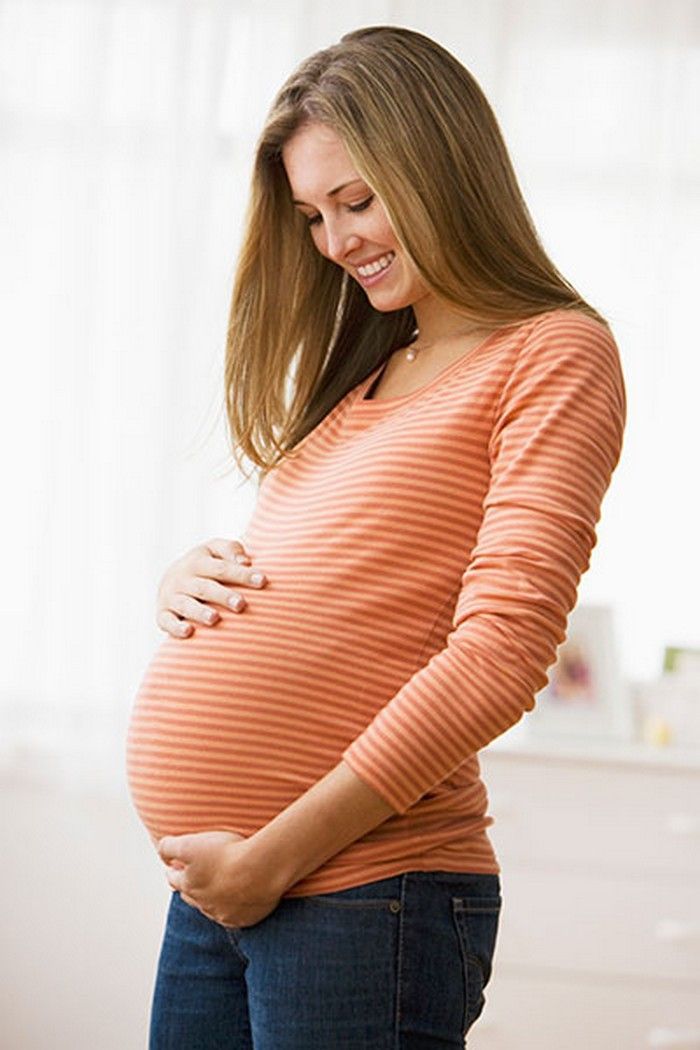
Such an episode of mood swings can be dangerous for both the mother and the baby. However, the early stages of pregnancy (the first trimester) are the period of greatest risk for serious fetal malformations due to drug use, so many women consider stopping all medication.
Medicines are classified according to their potential risks during pregnancy. The following lists the drugs prescribed for bipolar disorder that fall into this classification system and describes some of the specific problems associated with each of these categories.
Category D: use in life-threatening emergencies when no safer drugs are available. There is evidence of risk to the fetus.
Lithium: this drug significantly increases the risk of cardiac problems, as well as premature birth, neurological problems, and thyroid and kidney problems in the fetus.
Valproate (Depakine): This medicine is associated with a high risk of serious fetal malformations, especially if used in the first trimester of pregnancy.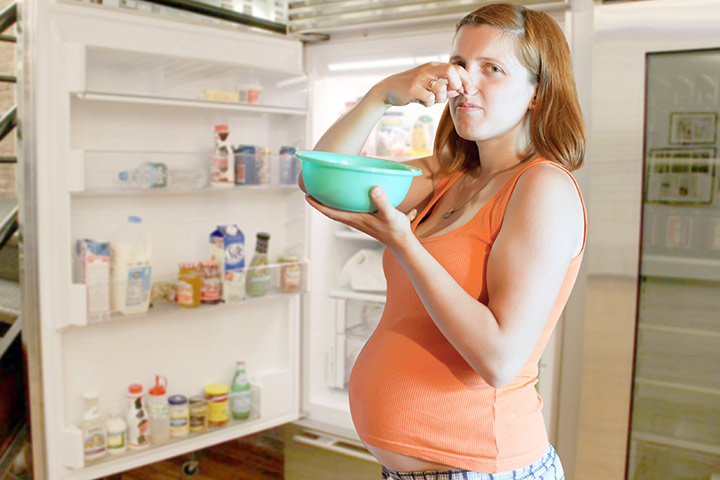 It also increases the risk of stillbirth and miscarriage.
It also increases the risk of stillbirth and miscarriage.
Carbamazepine (Tegretol): Mothers taking carbamazepine during pregnancy face a significant risk of fetal malformations.
Benzodiazepines: increase the risk of fetal malformations when used in the first trimester of pregnancy. When used late in pregnancy, they can cause muscle hypotension, or flaccid baby syndrome, a neurological condition/related to muscle weakness.
Paroxetine (Paxil): use in the first trimester of pregnancy leads to an increased risk of fetal malformations, especially of the cardiovascular system. Most other antidepressants currently in use fall under category C.
Imipramine and nortriptyline: These tricyclic antidepressants are considered class D drugs, while other tricyclics fall into class C, as indicated below.
Category C: Use with caution if benefits outweigh risks. Animal studies show risk; human studies are not available; either animal or human studies have not been conducted.
Lamotrigine (Lamictal): this drug is associated with a lower risk of major malformations compared to the other anticonvulsants listed above, but there is still a significant risk of some birth defects - possibly higher risk at higher doses.
Atypical antipsychotics: Little information is available on the risk of atypical antipsychotics in pregnancy, but they are thought to pose a lower risk of major malformations than class D drugs (lithium, valproate, and carbamazepine). Fetal development may be affected by drug-induced weight gain and changes in maternal glucose and insulin levels.
SSRIs and SNRIs antidepressants other than paroxetine: Pregnant women should avoid taking antidepressants during the third trimester to reduce serotonin-related problems in the newborn, including nervousness, feeding difficulties, and breathing problems.
Most antidepressants pose a lower risk of serious malformations than class D drugs. A rare problem associated with SNRIs is pulmonary hypertension - problems with the heart and lung system - in a child after long-term use by the mother during pregnancy.
A rare problem associated with SNRIs is pulmonary hypertension - problems with the heart and lung system - in a child after long-term use by the mother during pregnancy.
Other antidepressants: These include bupropion (Wellbutrin), nefazodone (Serzone), vilazodone (Viibryd), desirel (Trazodone), fluvoxamine (Luvox), mirtazapine (Remeron), tricyclics desipramine (Norpramin) and amitriptyline (Elavil) and MAOIs tranylcypromine (Parnate) and phenelzine (Nardil).
Do not change your treatment regimen or stop taking your medication without consulting your doctor. The relapse rate is relatively high during and after pregnancy, when the risk of impulsivity, poor self-care, and suicide is increased. Work with your doctor to develop a treatment plan that balances your well-being (which is as important to your baby as it is to you) with developmental safety. Often such plans include choosing medications that carry less risk during pregnancy, using only one medication if possible, and taking as low doses as possible.
You may be interested in: Bipolar disorder in women
Postnatal period
The postnatal period is known for its high risk of recurrence of mood swings. Many women and their doctors restart their pre-pregnancy medications immediately after delivery to reduce the chance of a mood swing episode. But this has the following potential disadvantages.
- Many medications pass through breast milk, so if you start taking medication immediately after giving birth, you will have to feed your baby formula milk instead of breast milk, which would help restore sleep.
- Fatigue or other side effects from resuming medication are exacerbated by the arrival of a newborn in the house; however, these effects may be a small price to pay for preventing a mood swing episode.
— It can be difficult to achieve your planned medication levels immediately after delivery. when body weight and fluid levels change dramatically.
Similar articles:
Bipolar disorder in women
Pregnancy and antidepressants
Pregnancy and childbirth with bipolar disorder
Summary
Risks for pregnant women and the fetus associated with the use of normothymic drugs
Today, there is a limited evidence base regarding the effect of mood stabilizers on risks for pregnant women and the fetus.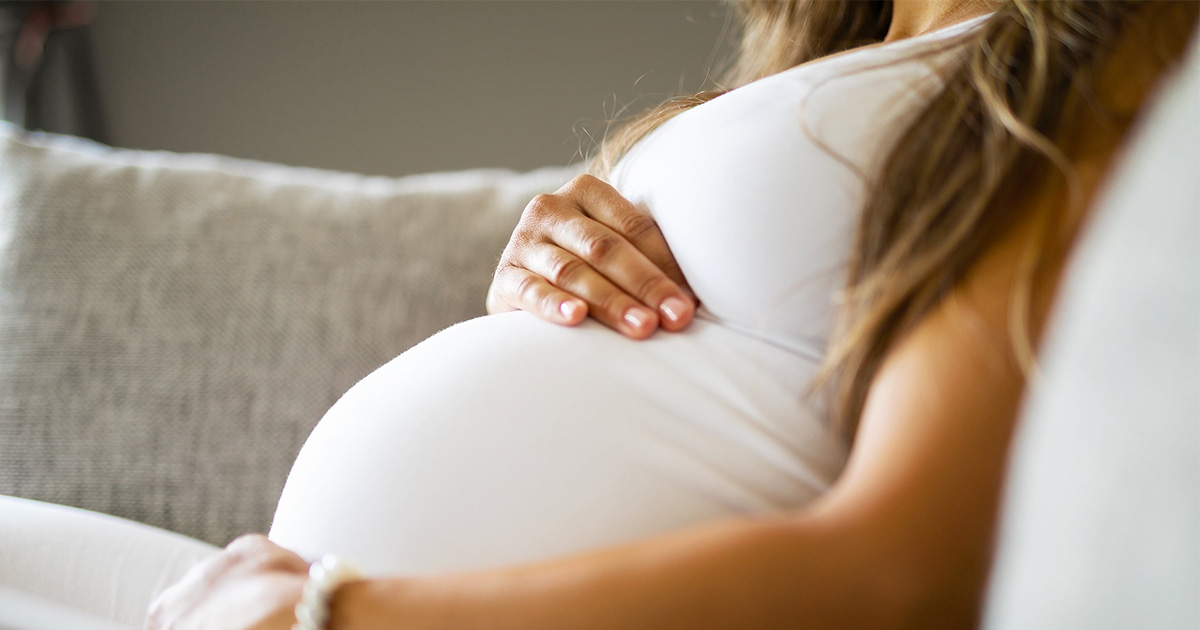 Most of the published works demonstrate the relationship between their intake and the development of congenital malformations, premature birth and fetal growth retardation.
Most of the published works demonstrate the relationship between their intake and the development of congenital malformations, premature birth and fetal growth retardation.
Interesting in this regard is the scientific work published in November of this year in the British Medical Journal, in which scientists obtained new data regarding this problem. In this cohort study, Dr. Robert Boden and co-authors from Uppsala University, Sweden, examined 332,137 pregnant women, of whom 874 were diagnosed with bipolar disorder. The rest of the subjects without this disease made up the comparison group. 320 women with bipolar disorder were treated with mood stabilizers.
Pregnancy and childbirth
Newborns of untreated mothers for bipolar disorder had a significantly increased risk of severe prematurity compared with controls (relative risk (RR) 1.96; 95% confidence interval ( CI) 0.93–4.14). In the group of women who received therapy, this indicator was 0. 48 (95% CI 0.07–3.38).
48 (95% CI 0.07–3.38).
Some intergroup differences in the risk of having a child with low Apgar scores were recorded, but after standardization for the main variables, these differences were not statistically significant.
Other outcomes studied included gestational diabetes mellitus, delivery with forceps or vacuum extractor (instrumented vaginal delivery), non-spontaneous (paced) onset of labor, neonatal hypoglycemia.
Significantly increased risk in untreated and treated women with bipolar disorder compared with controls was reported for instrumental vaginal delivery (RR of 1.52) and induced labor (RR of 1.69) among the listed outcomesand 2.28, respectively). The risk of other adverse outcomes in groups of women with bipolar disorder who took and did not take normothymic drugs was not significantly increased.
Anthropometric measurements
Primary analysis showed an association between untreated bipolar disorder and an increased risk of having a baby with low body weight, height and head circumference for the corresponding gestational age. After standardization, these differences were not statistically significant. In the group of women who received therapy, these indicators were also slightly increased.
After standardization, these differences were not statistically significant. In the group of women who received therapy, these indicators were also slightly increased.
A non-statistically significant increase in risk in both groups of women with bipolar disorder was also noted for having a baby with a high birth weight for a given gestational age.
Particular attention should be paid to the high prevalence of microcephaly in women with bipolar disorder. Thus, in the control this pathology was recorded in 2.3% of cases; in the group of women taking normothymic drugs - in 3.3%; in untreated women with bipolar disorder - 3.9%.
Congenital malformations
The prevalence of fetal malformations in women without bipolar disorder was 2.0%, in women with this pathology who did not receive therapy - 1.9% and in women taking normothymic drugs, this the indicator fluctuated within 0–3.5% (table).
Table Prevalence of fetal malformations in women with bipolar disorder treated with mood stabilizers in early pregnancy
| Preparation | Number of patients in the group, n | Number of women with fetal malformations, n (%) | p | Description of malformations |
|---|---|---|---|---|
| Lamotrigine | 116 | 4 (3.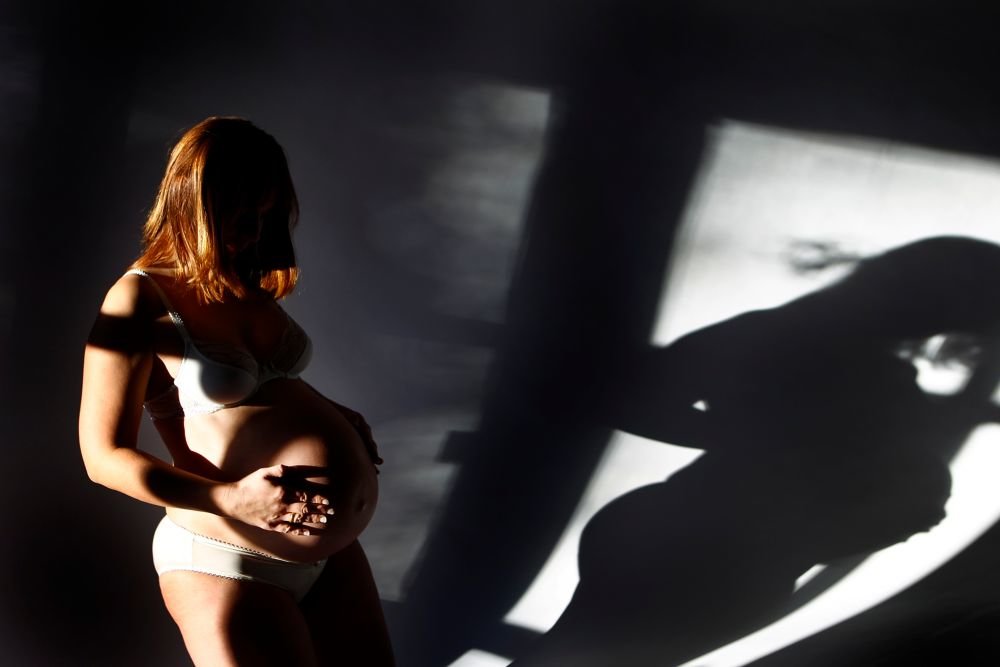 5) 5) | 0.12 | Equinovar clubfoot (n=2), congenital heart defects (n=2) |
| Antipsychotics | 113 | 4 (3.5) | 0.11 | Equinovar clubfoot (n=1), cleft palate (n=1), malformations of the heart (n=1) and genitourinary system (n=1) |
| Lithium preparations | 107 | 3 (2.8) | 0.19 | Malformations of the heart (n=2), hypospadias (n=1) |
| Valproic acid | 32 | 1 (3.1) | 0.34 | Hypospadias (n=1) |
| Carbamazepine | 7 | 0 | – | – |
Summarizing the data obtained, R. Boden et al. emphasize that the choice of tactics for managing pregnant women with bipolar disorder is ambiguous. On one side of the scale is the potential risk of congenital fetal anomalies and perinatal complications due to the use of mood stabilizers, on the other is the risk of an affective episode in the absence of therapy.
